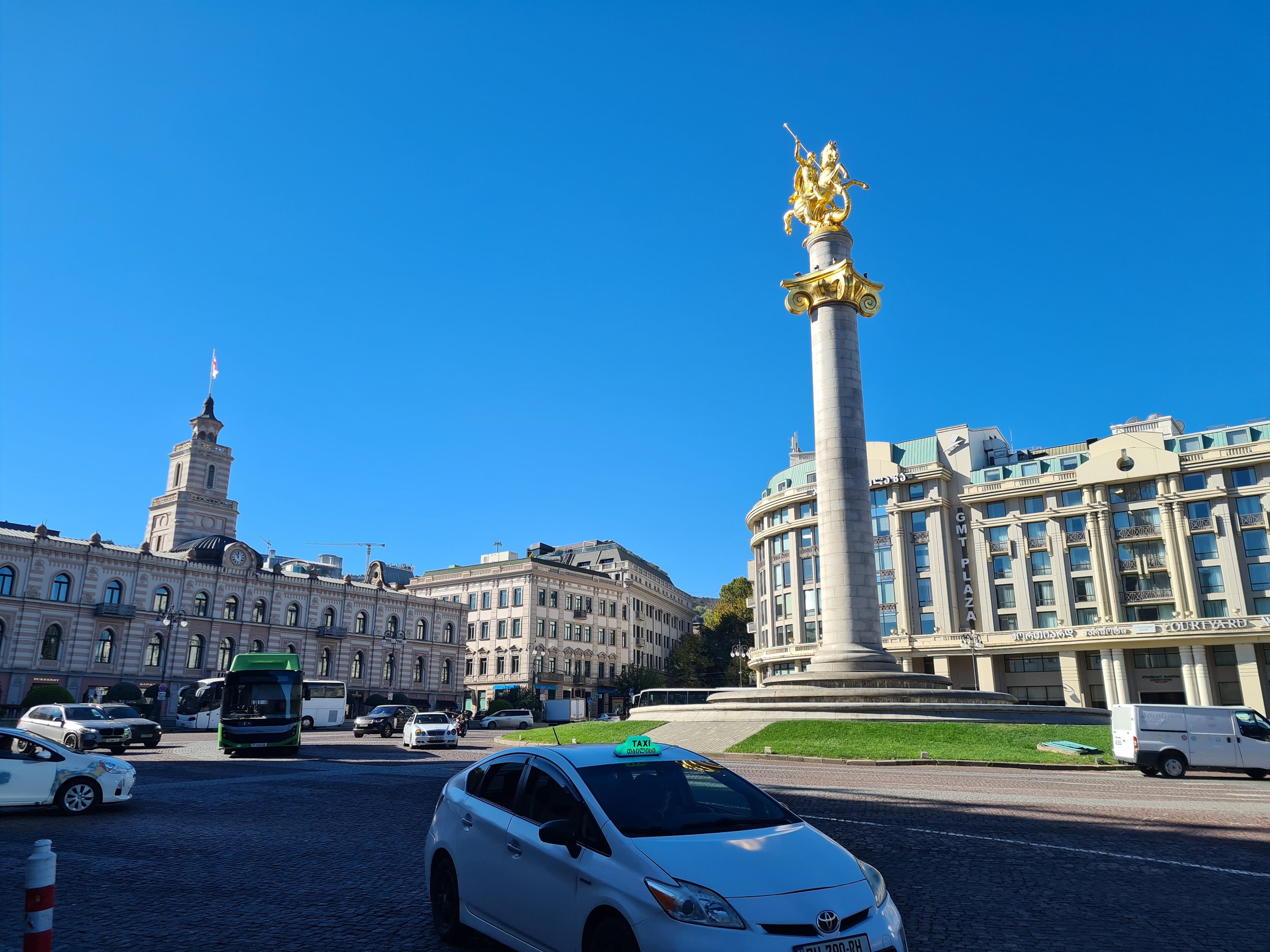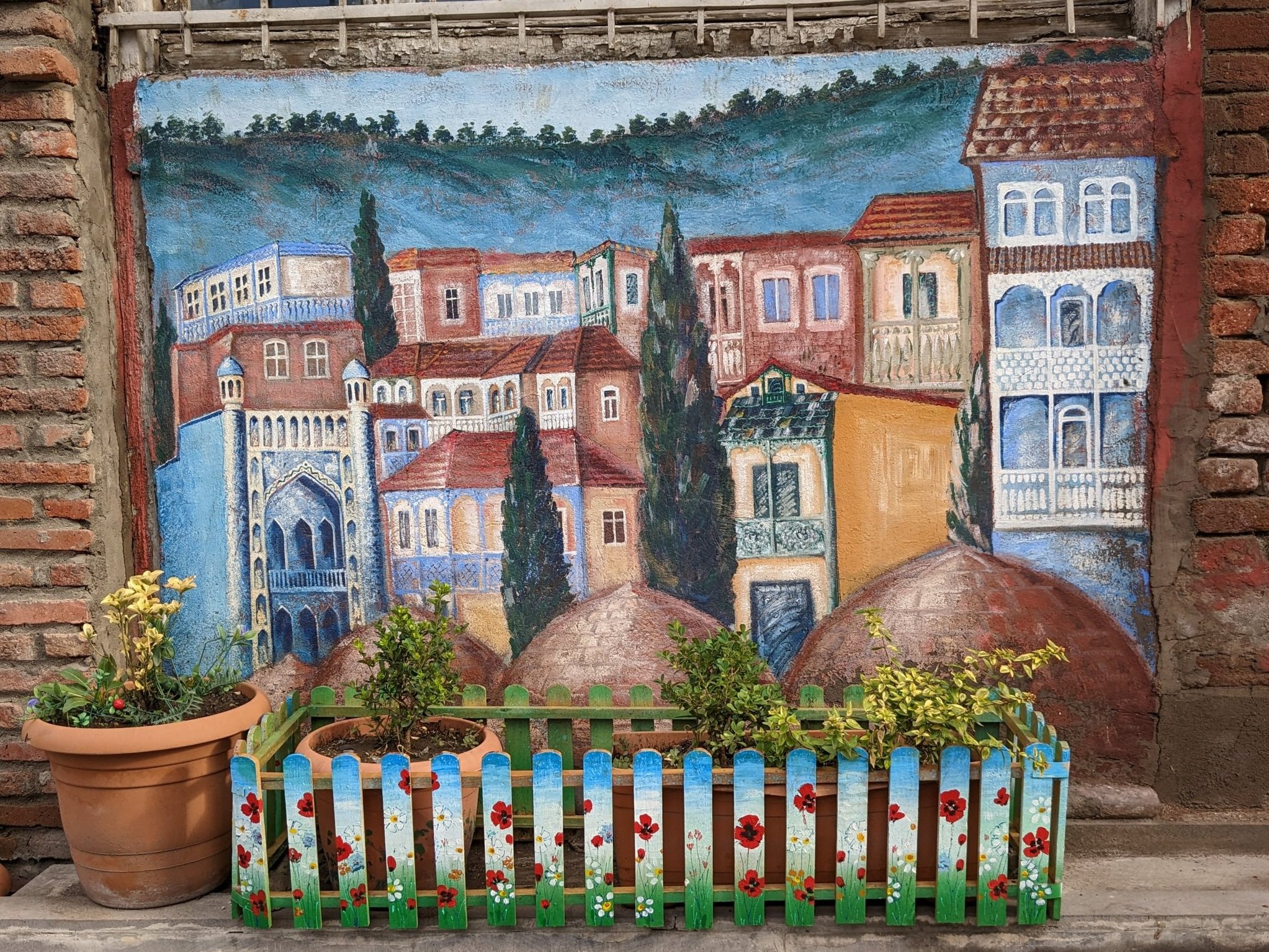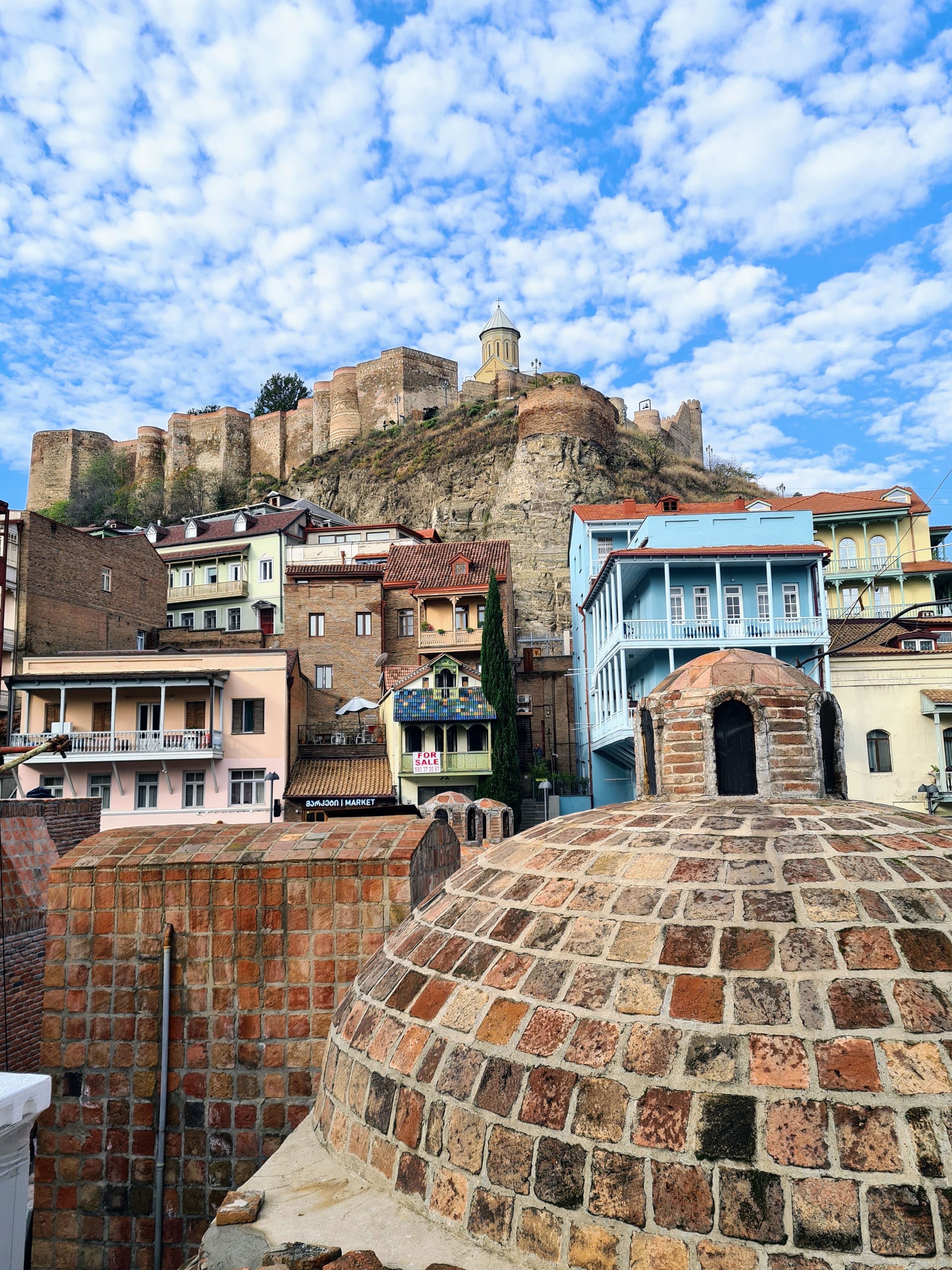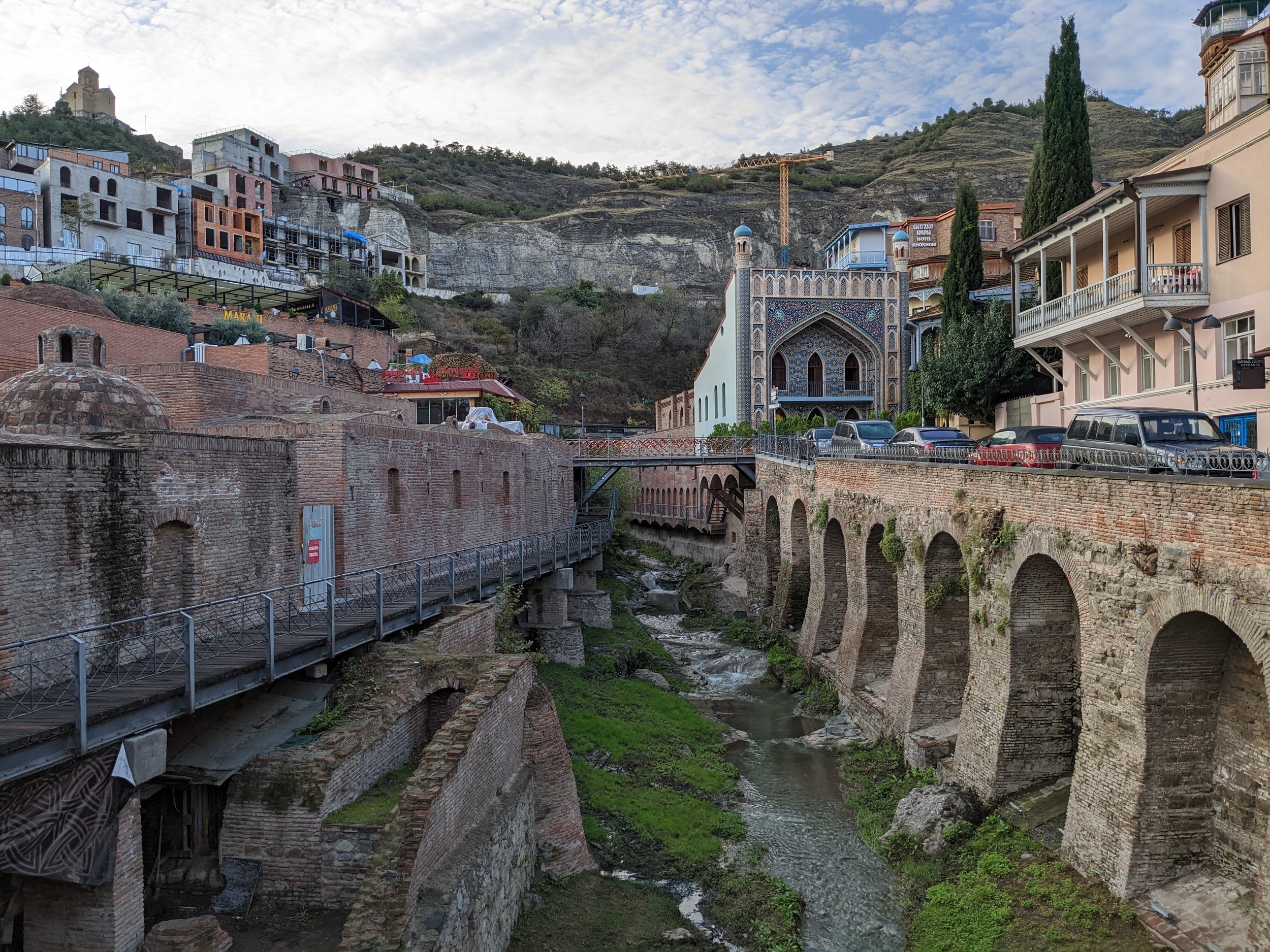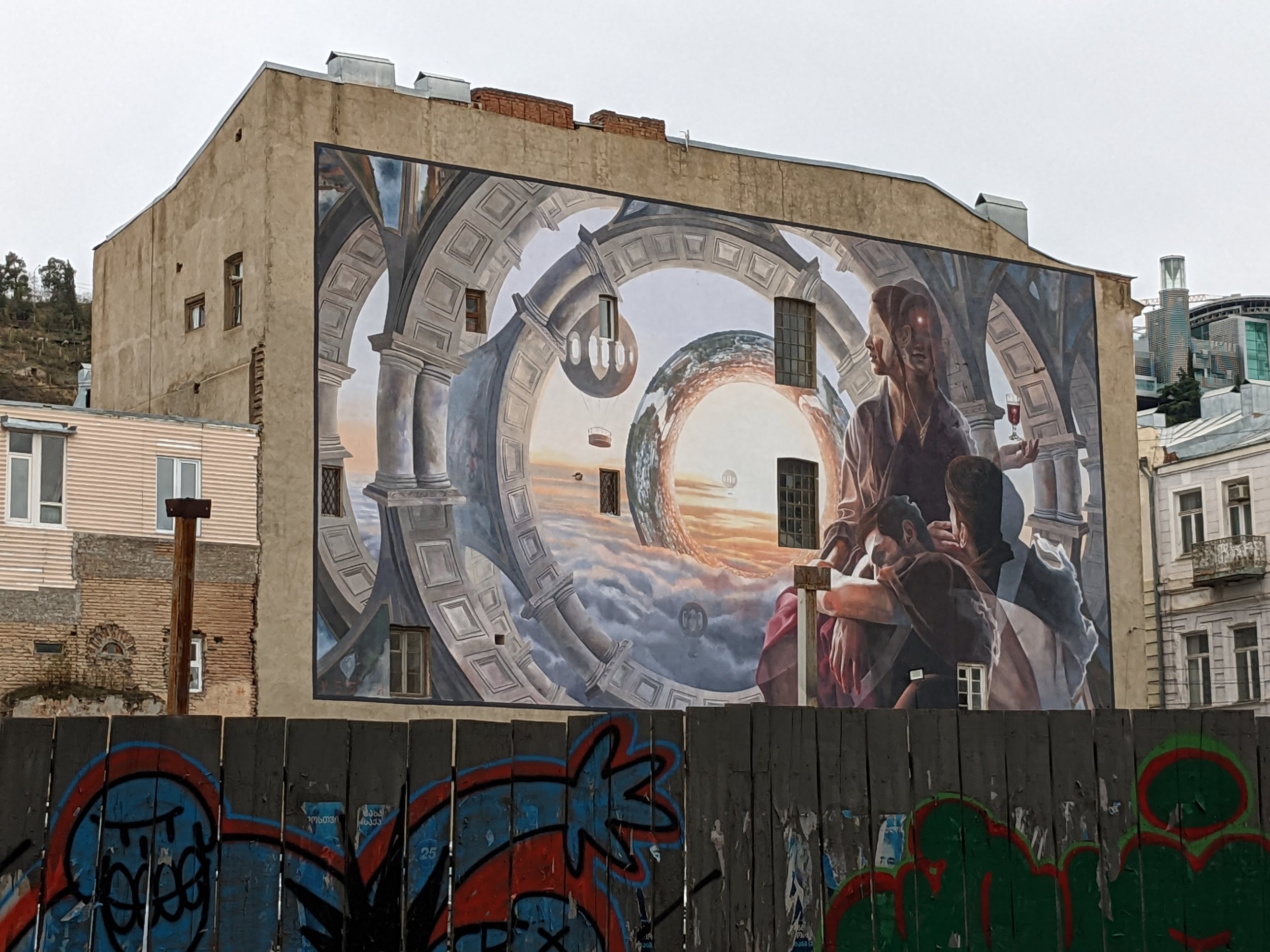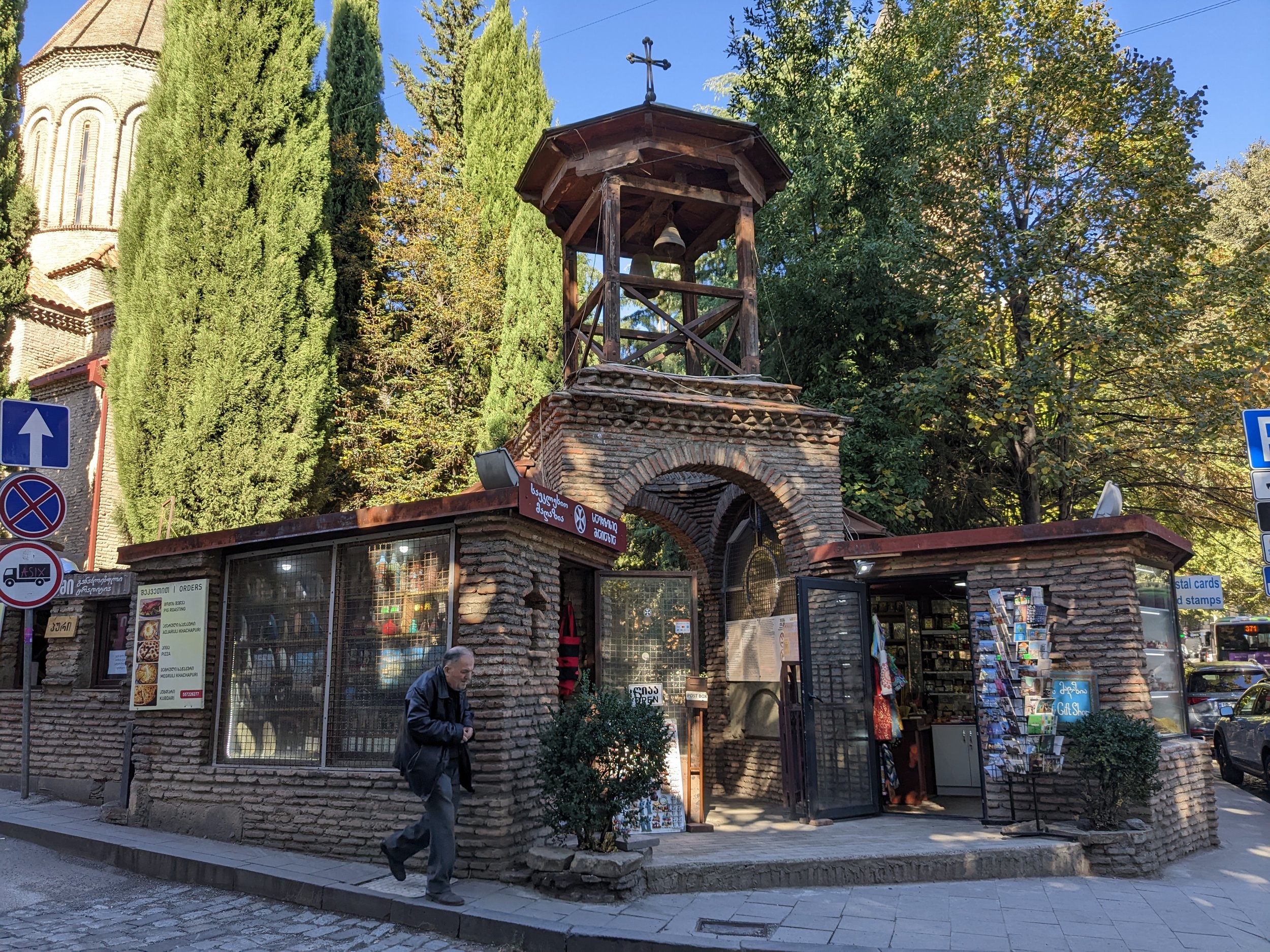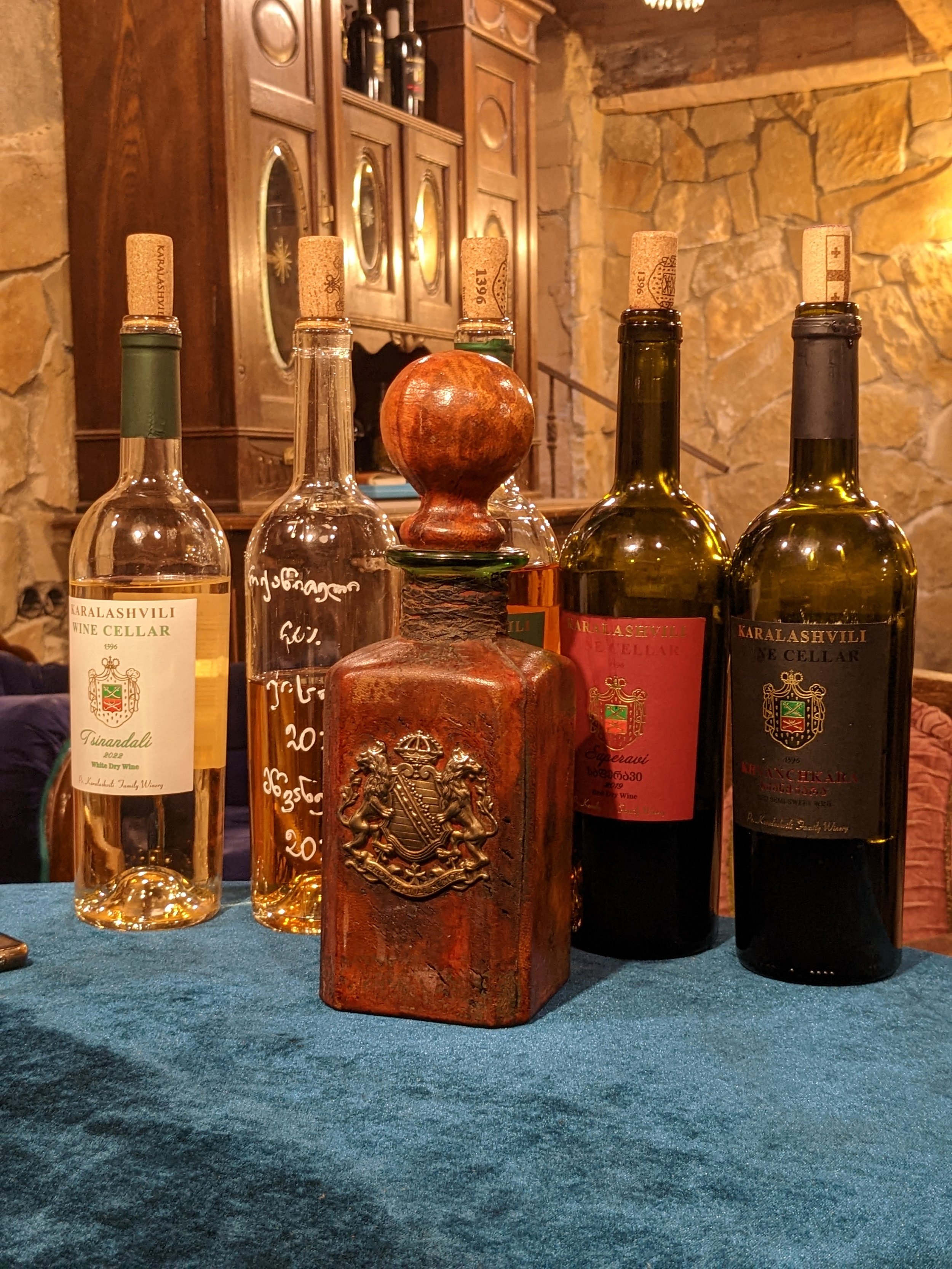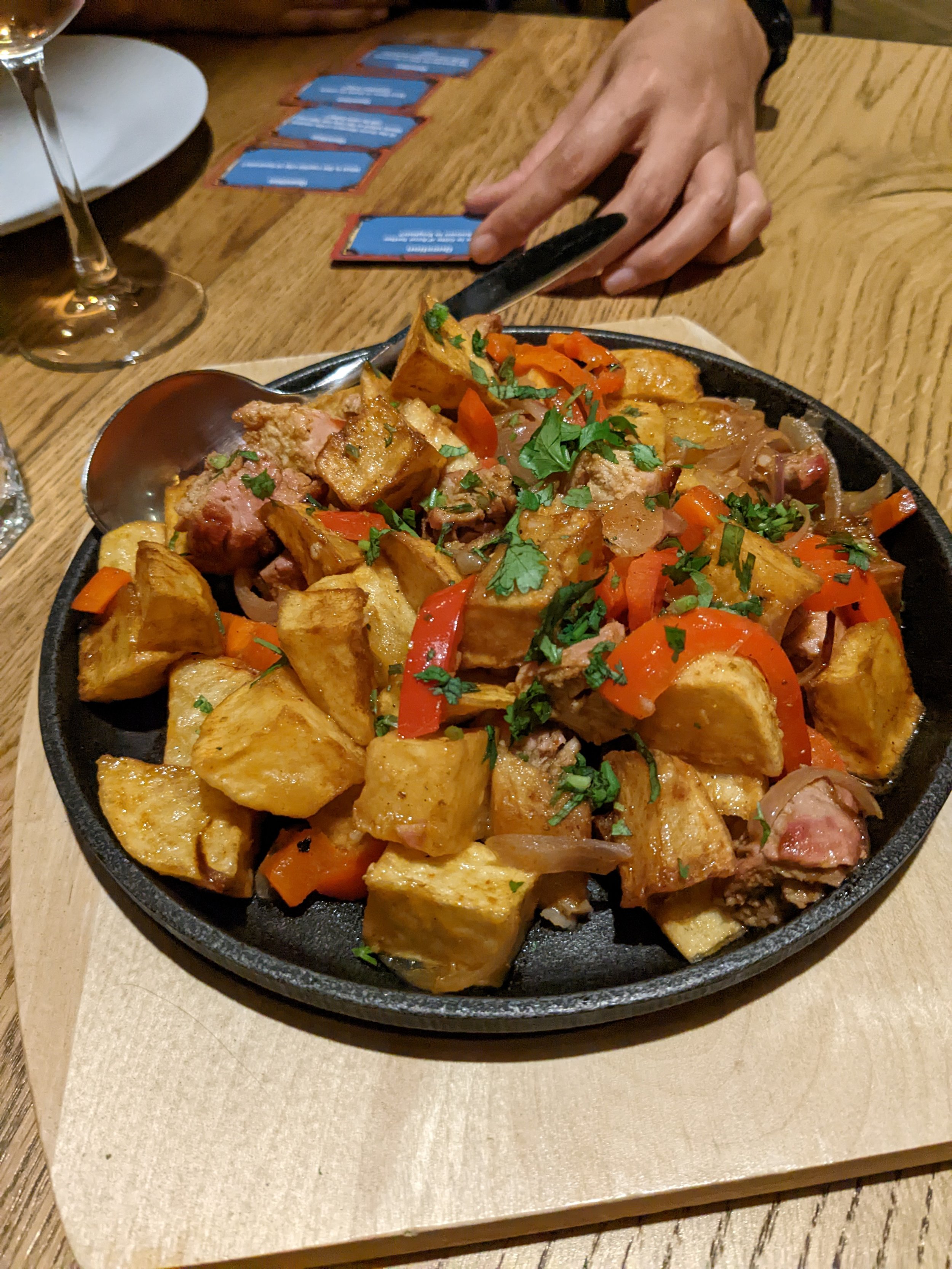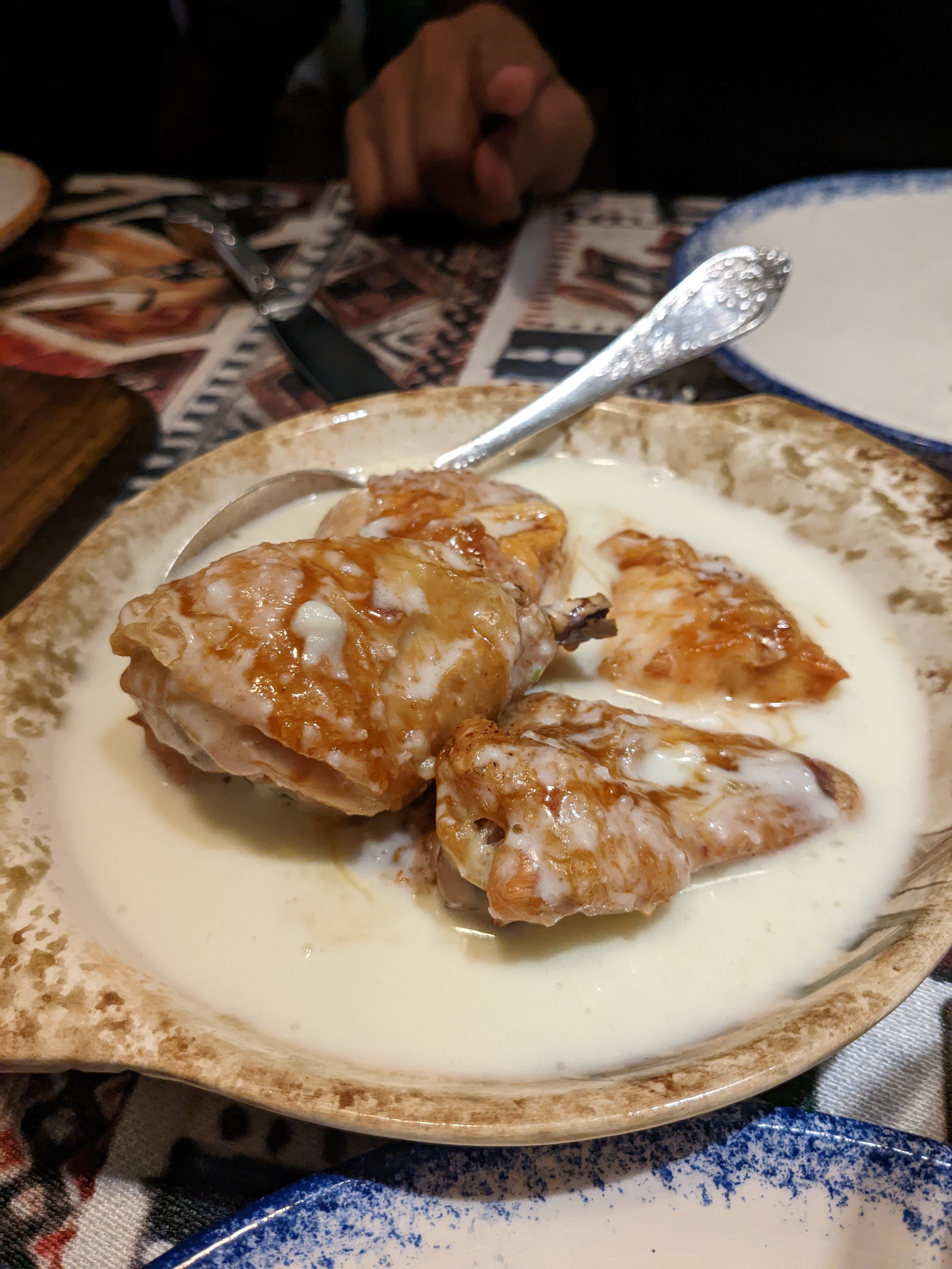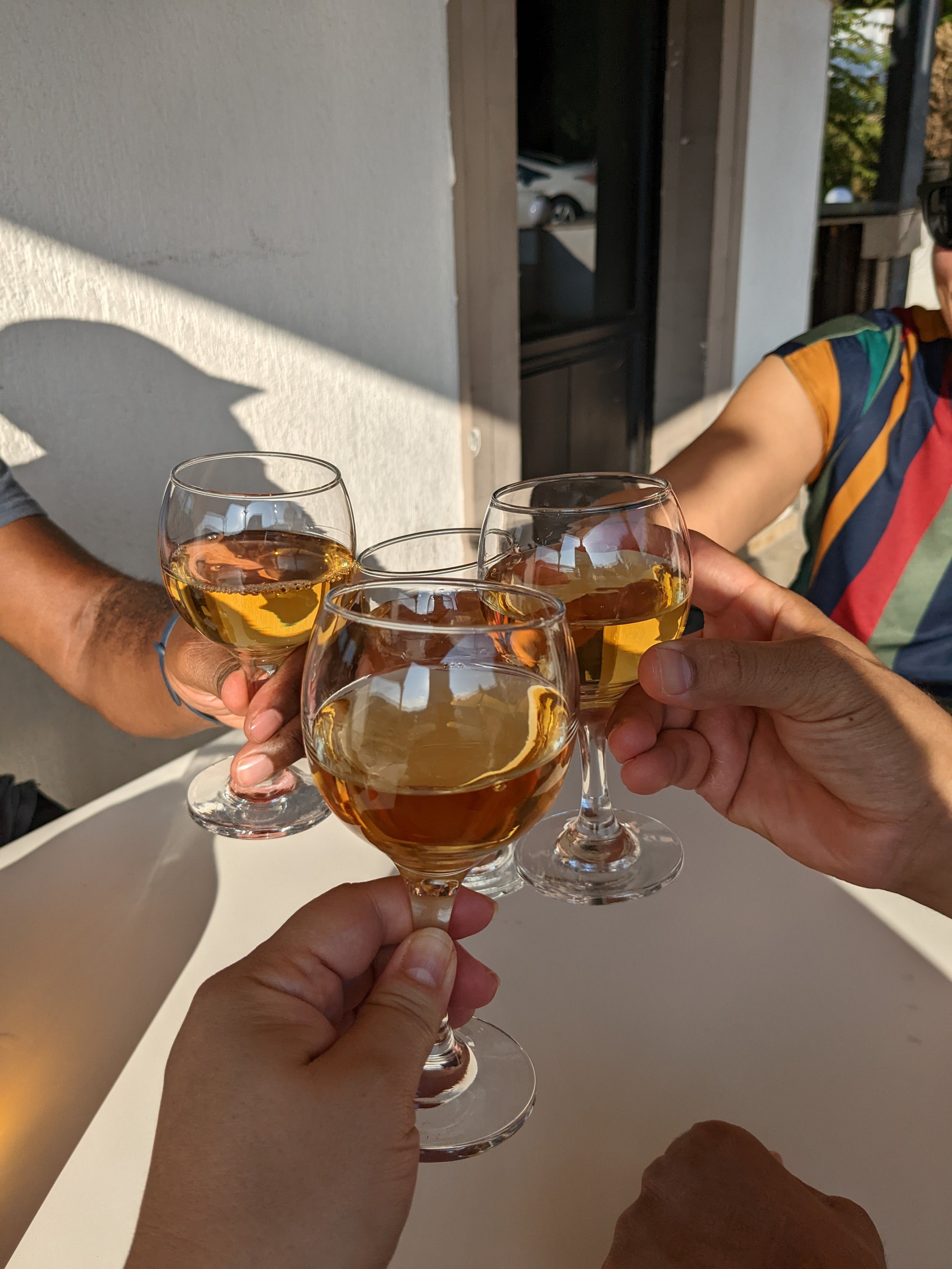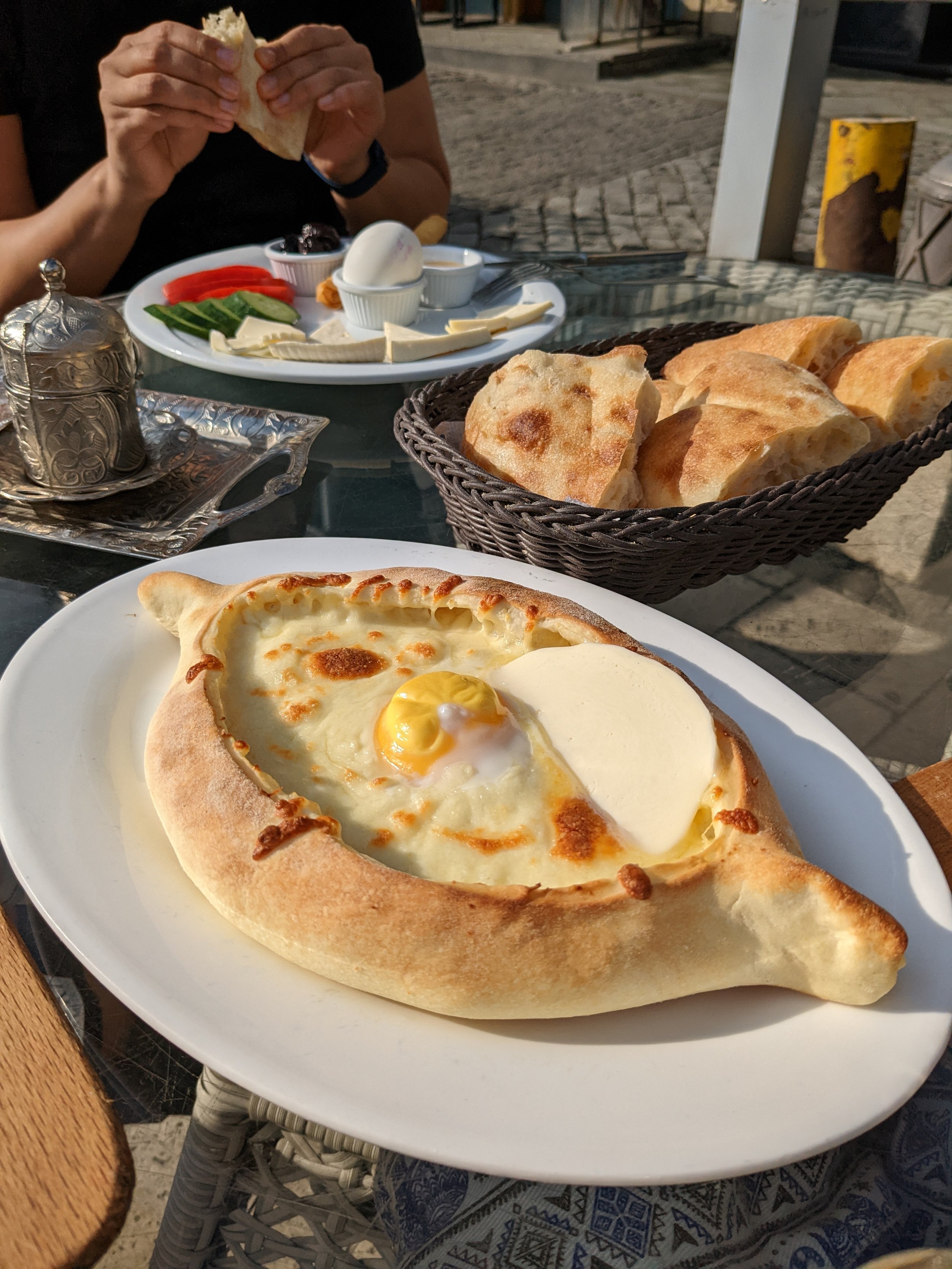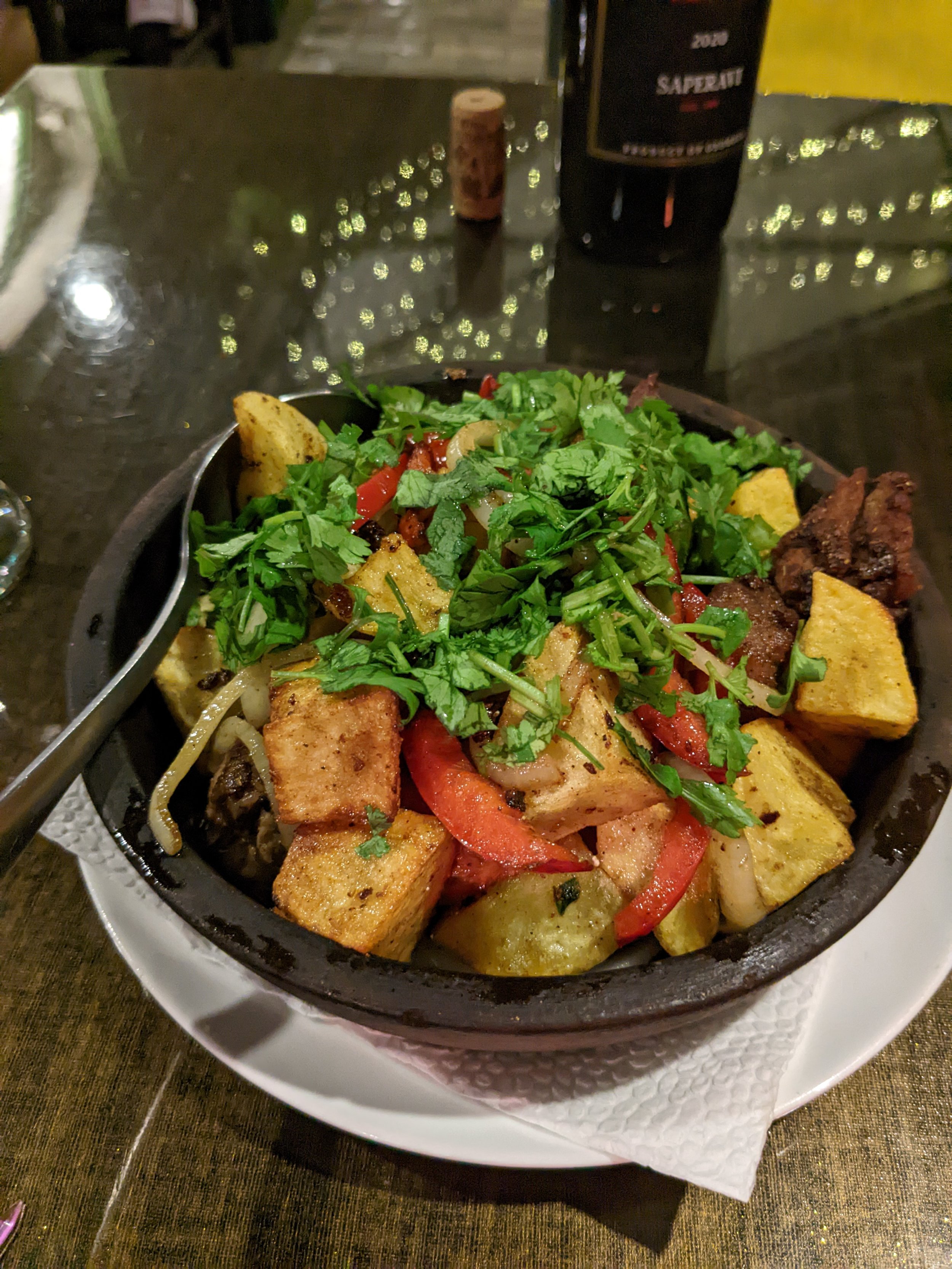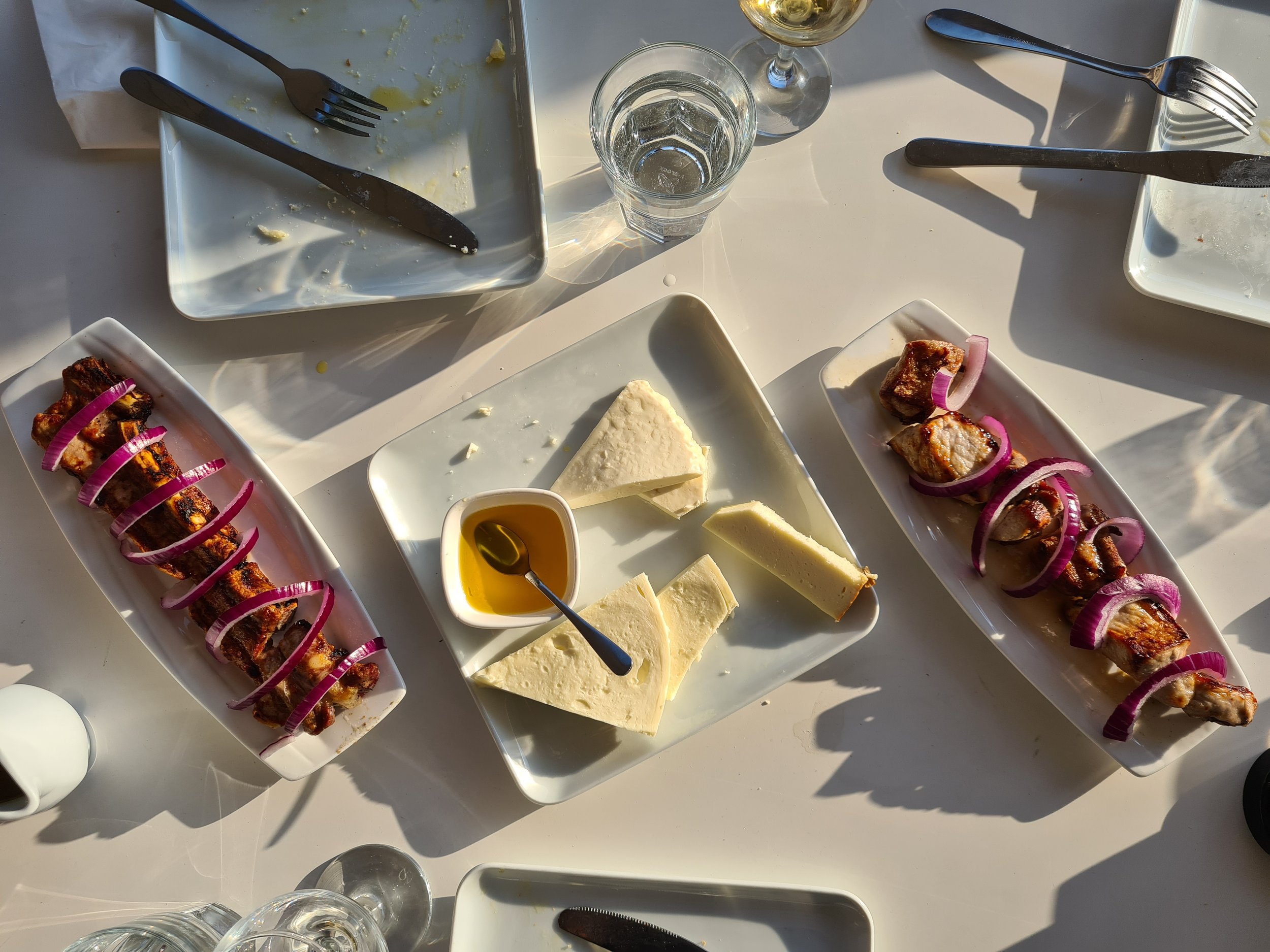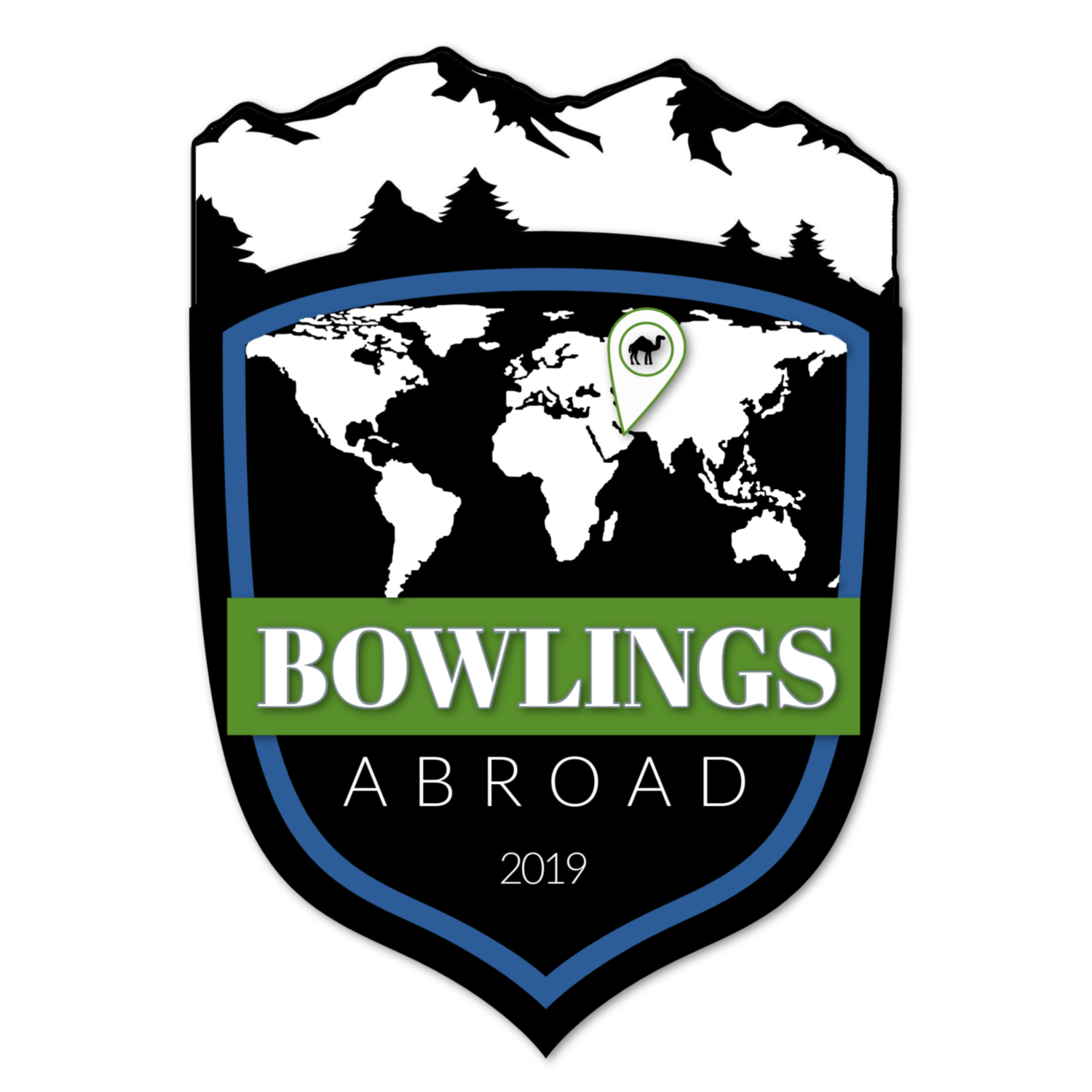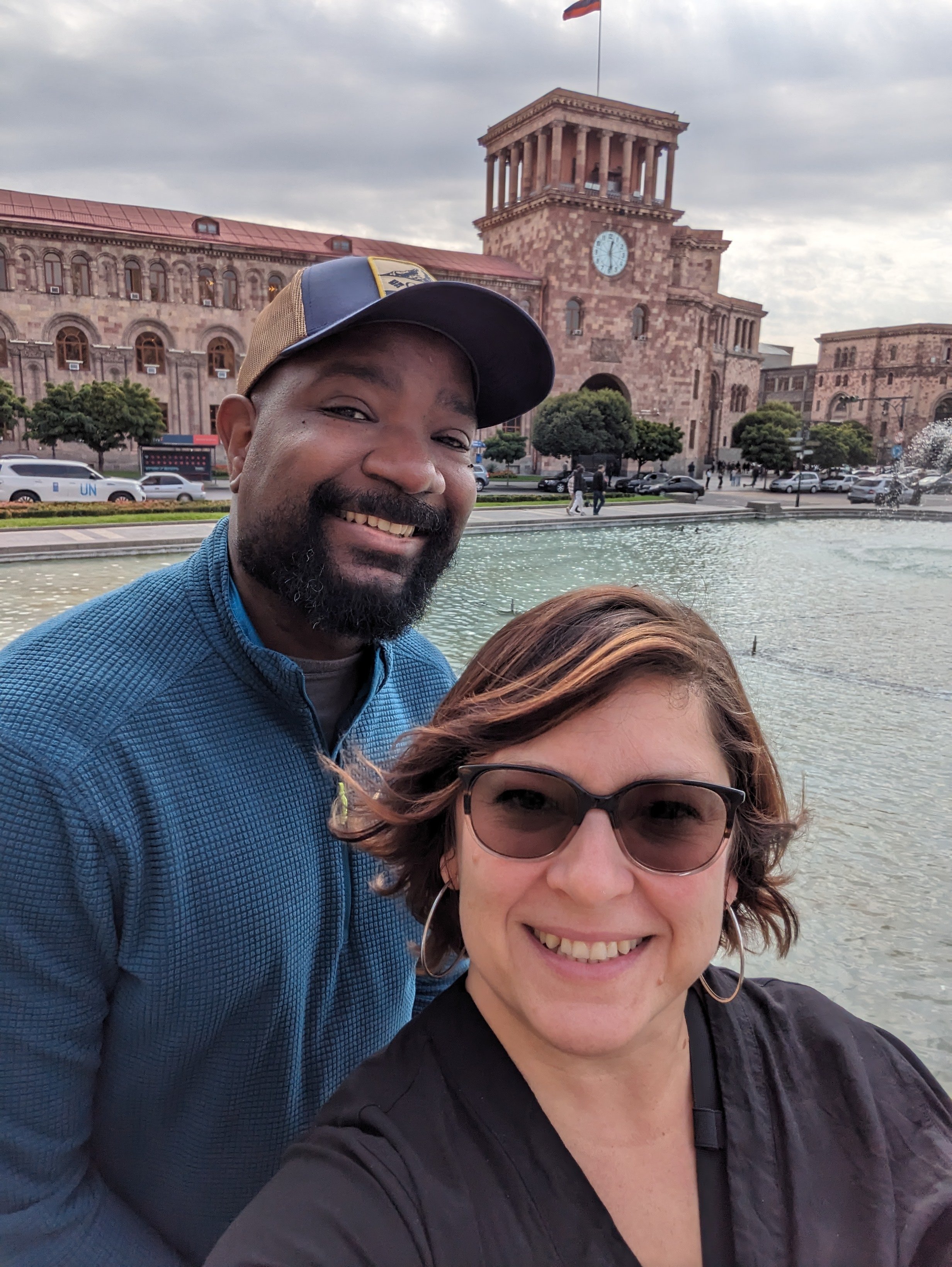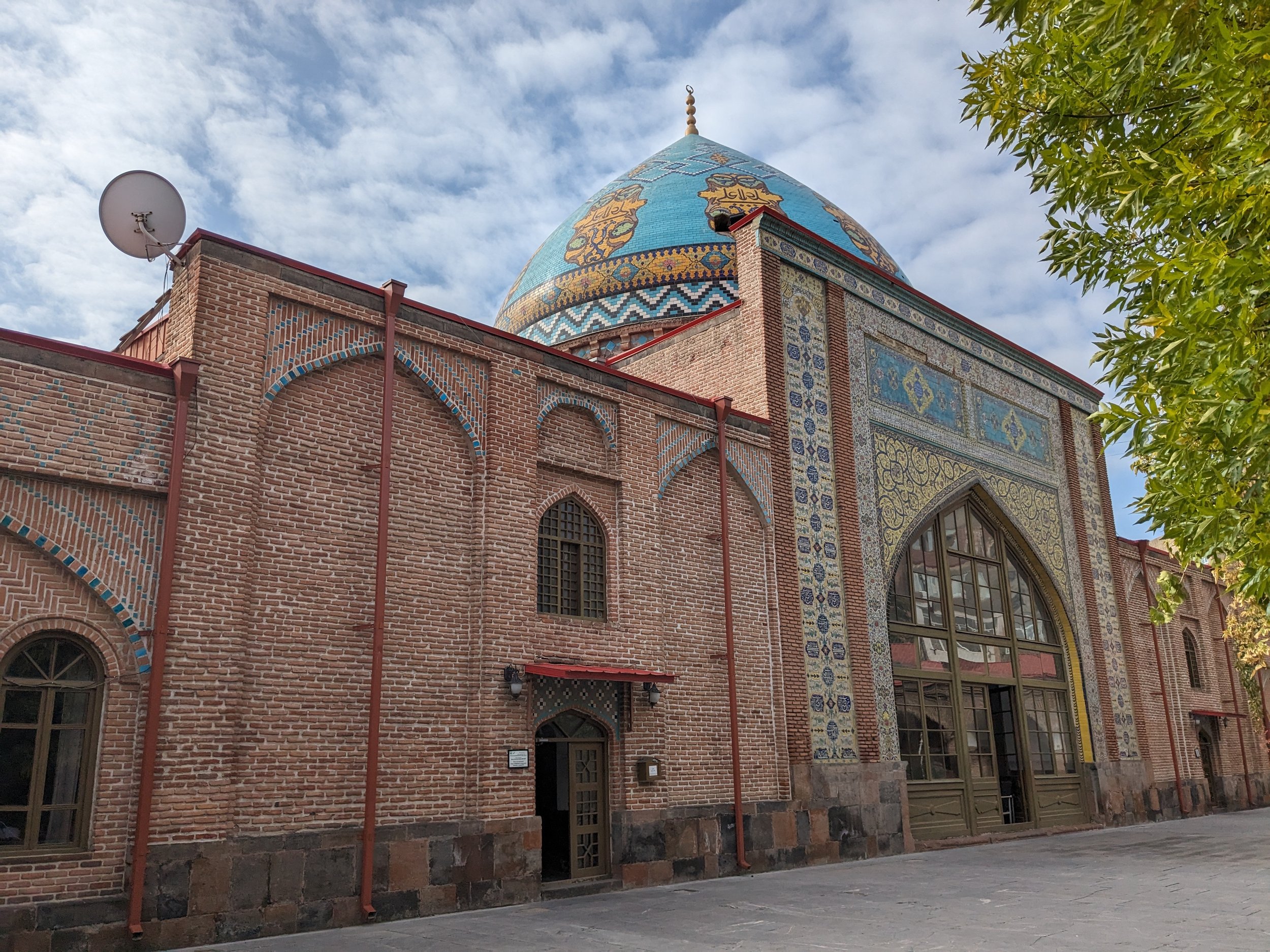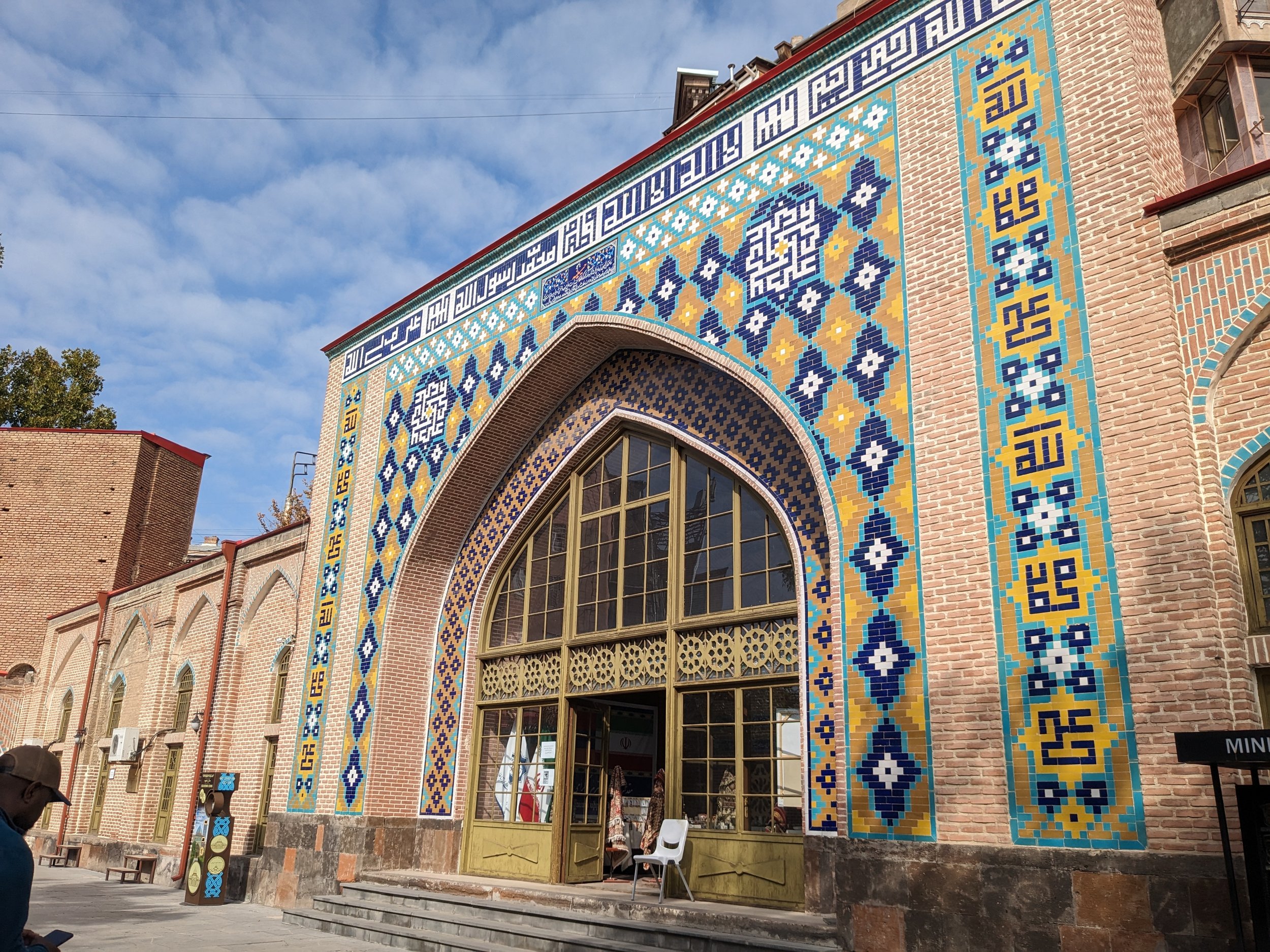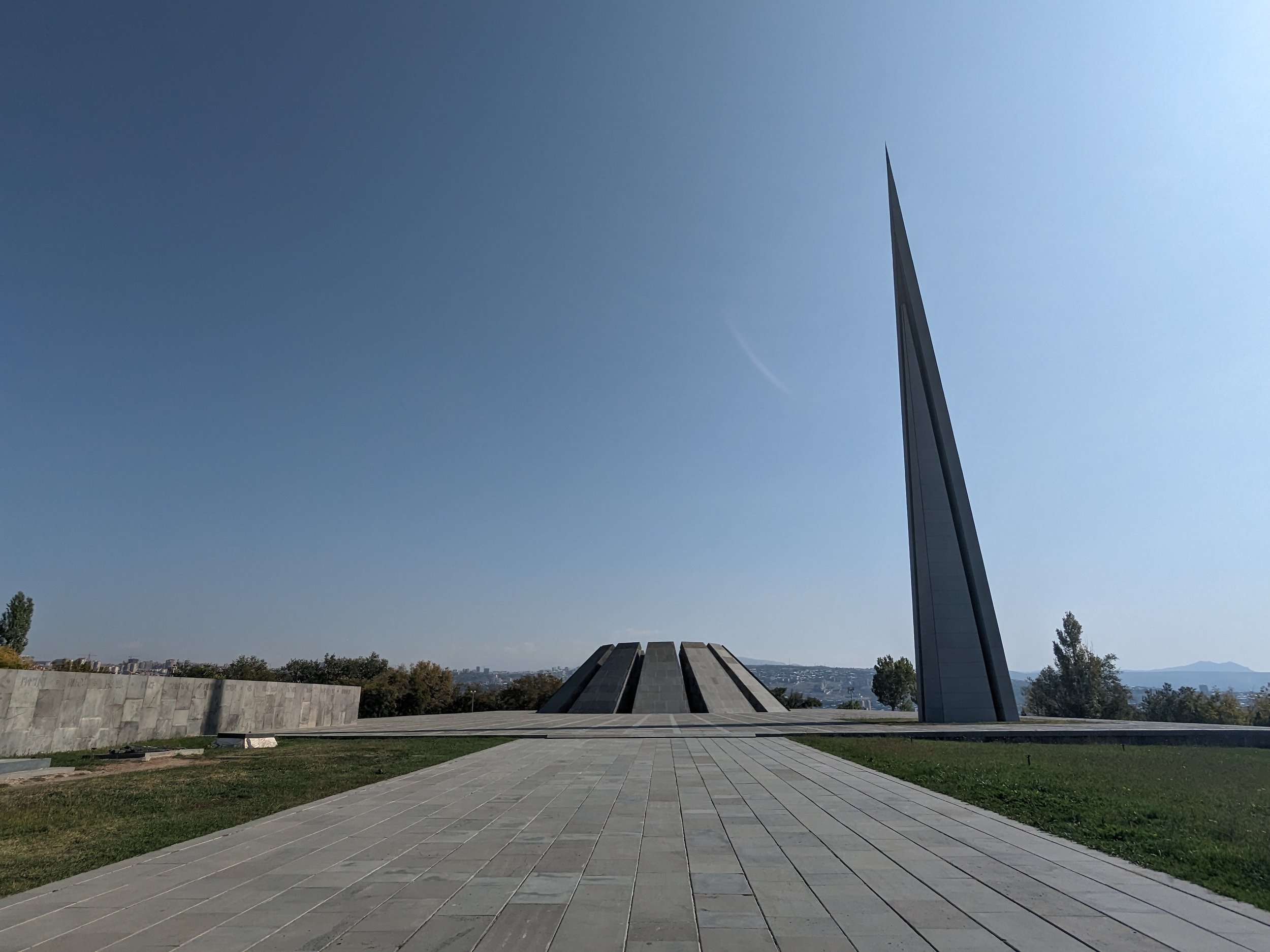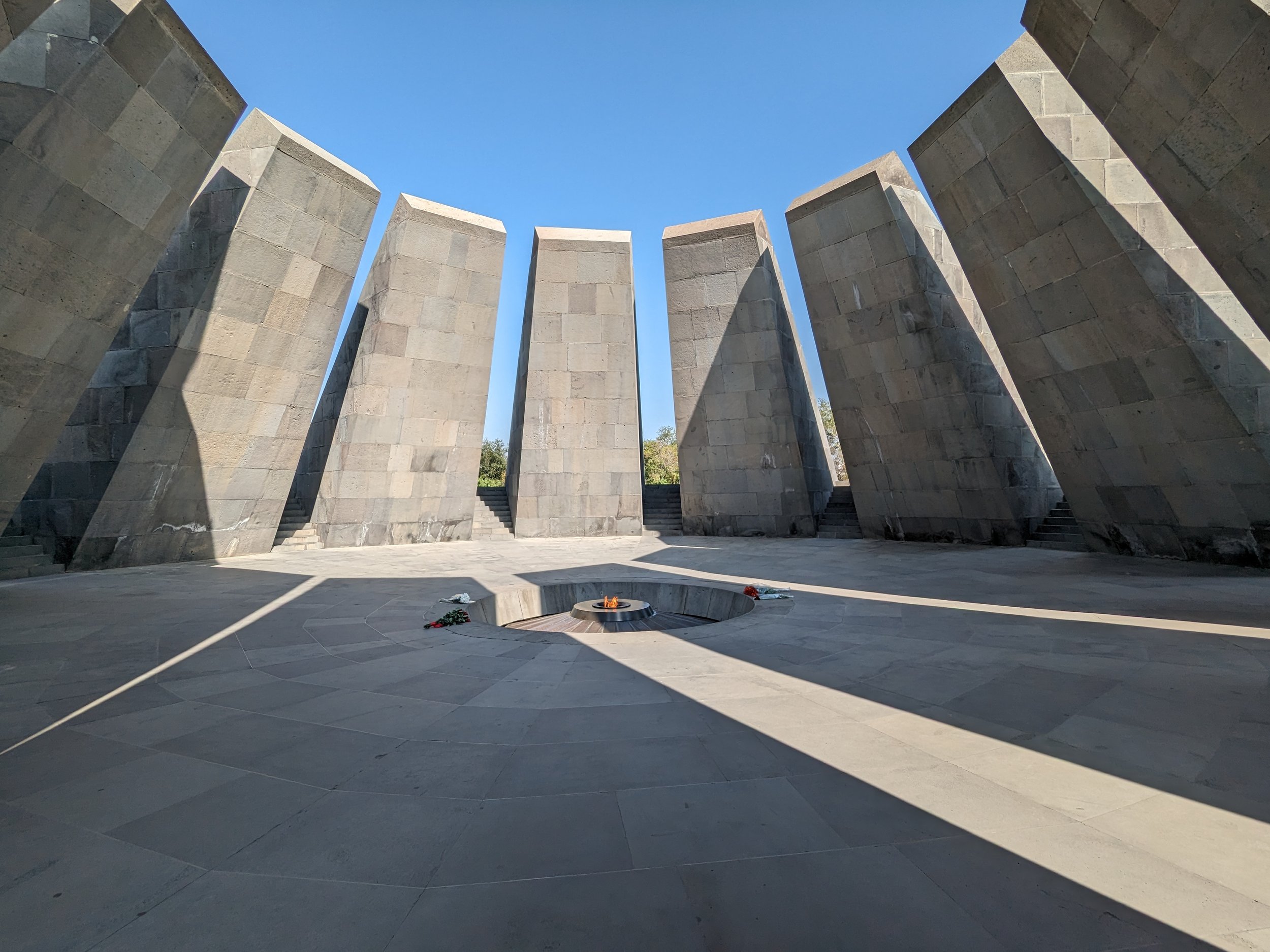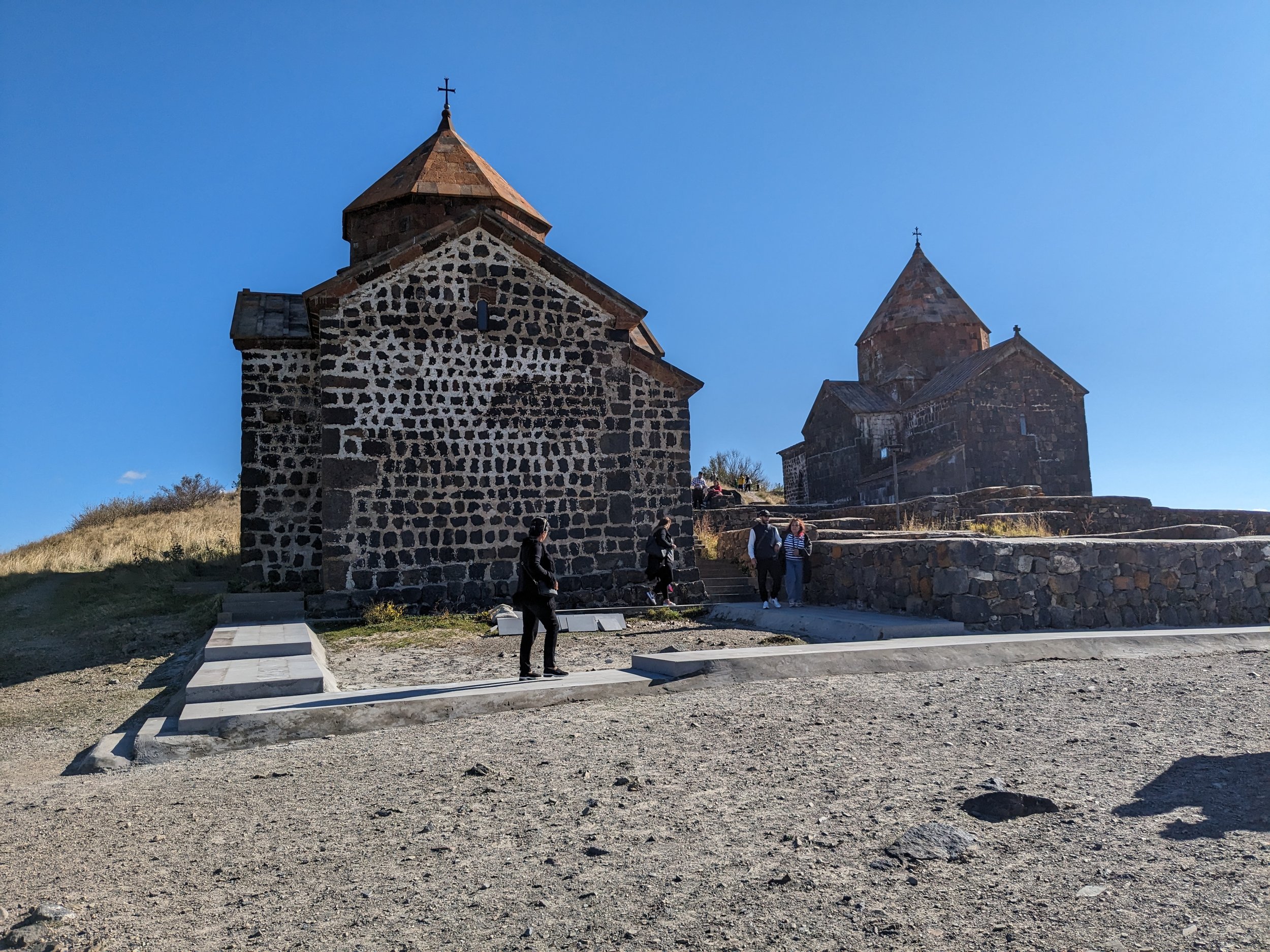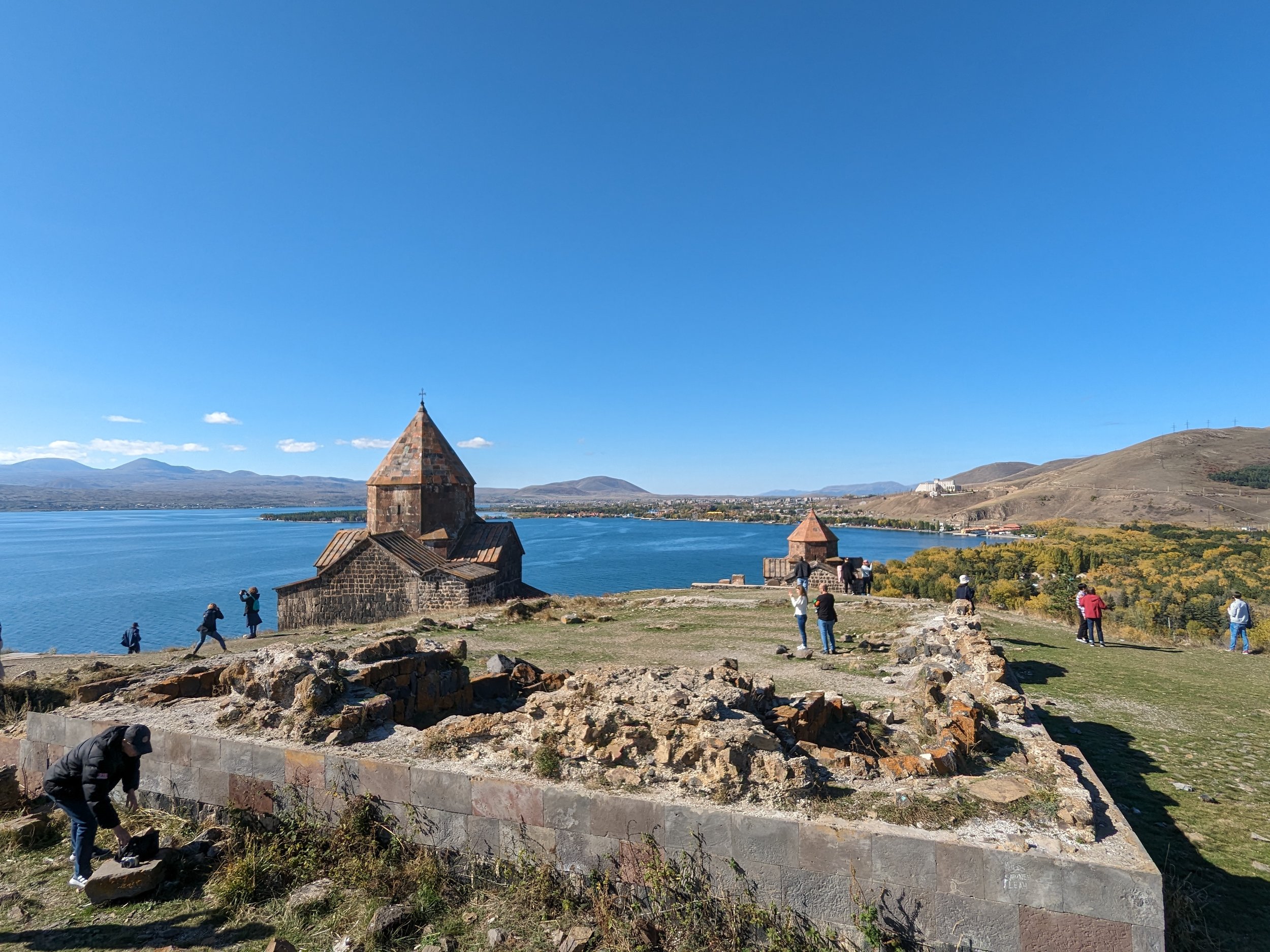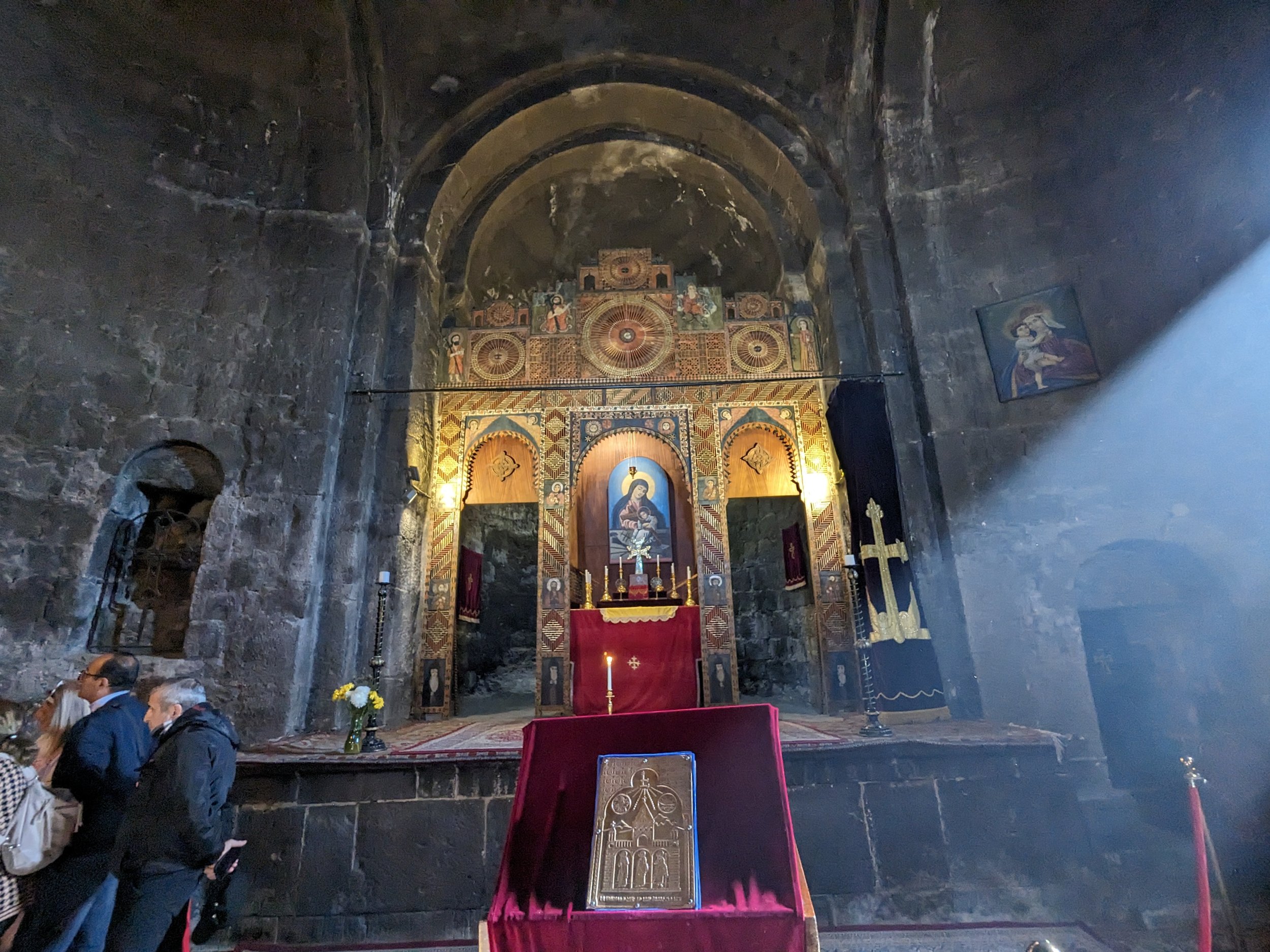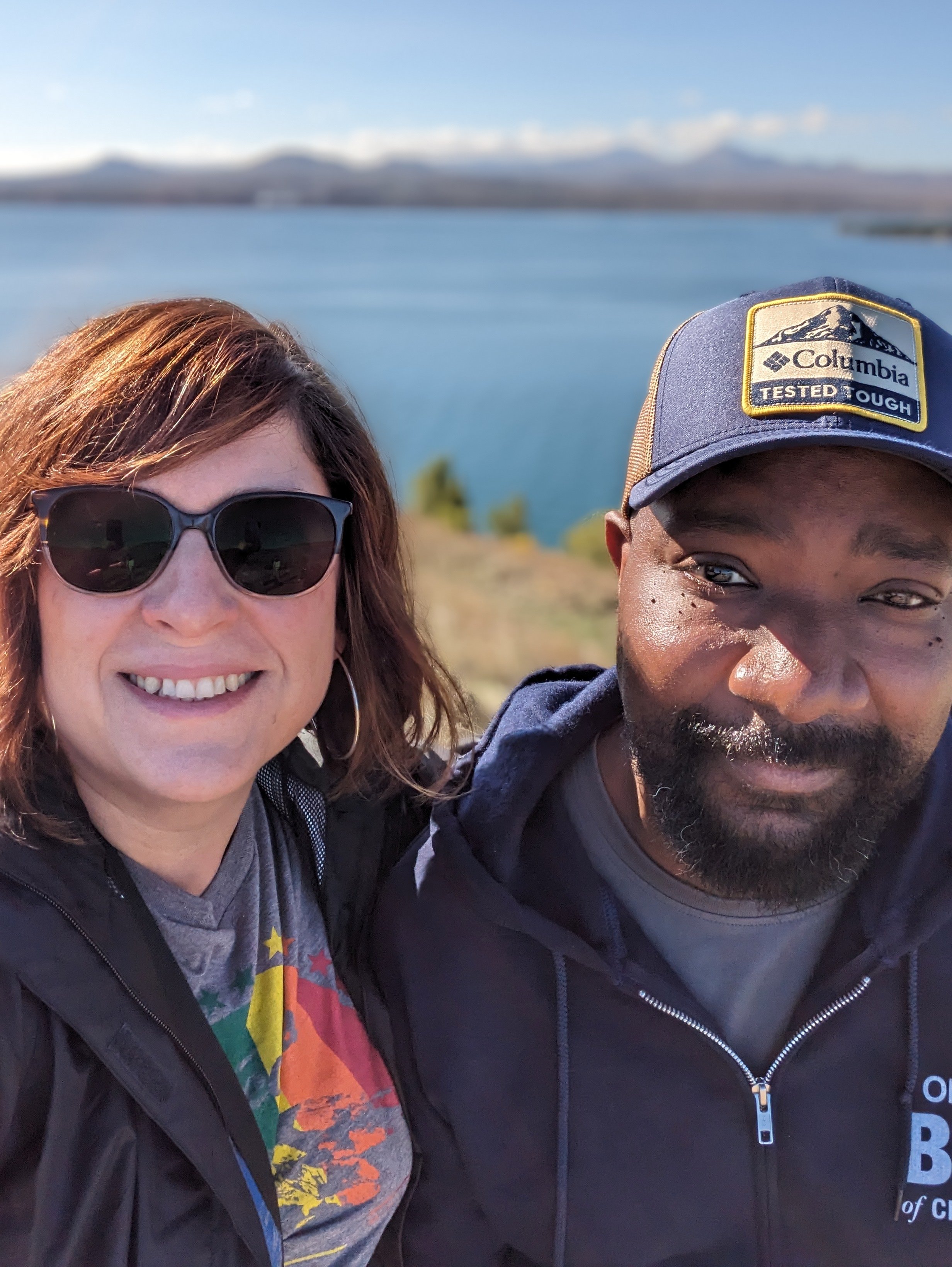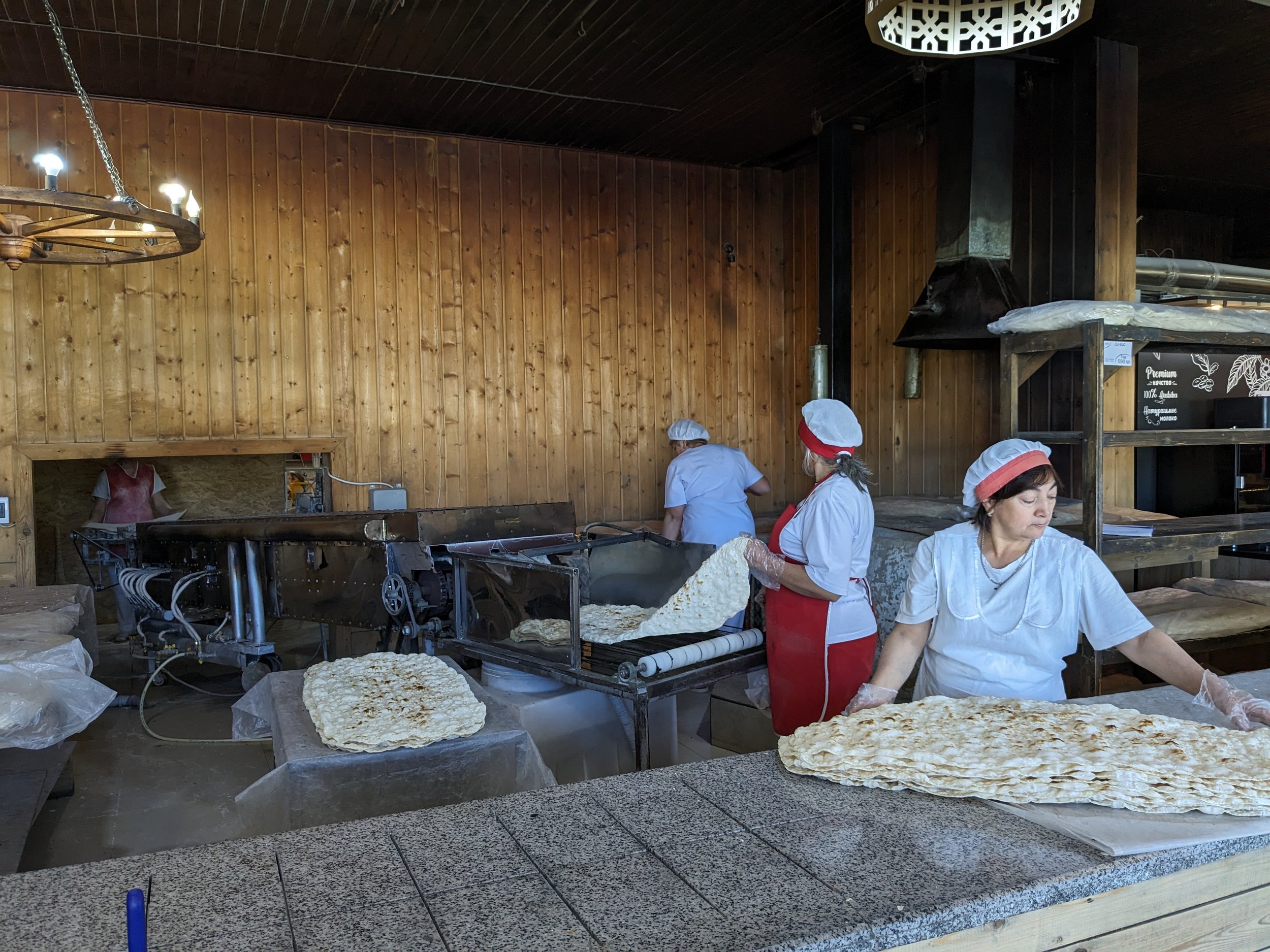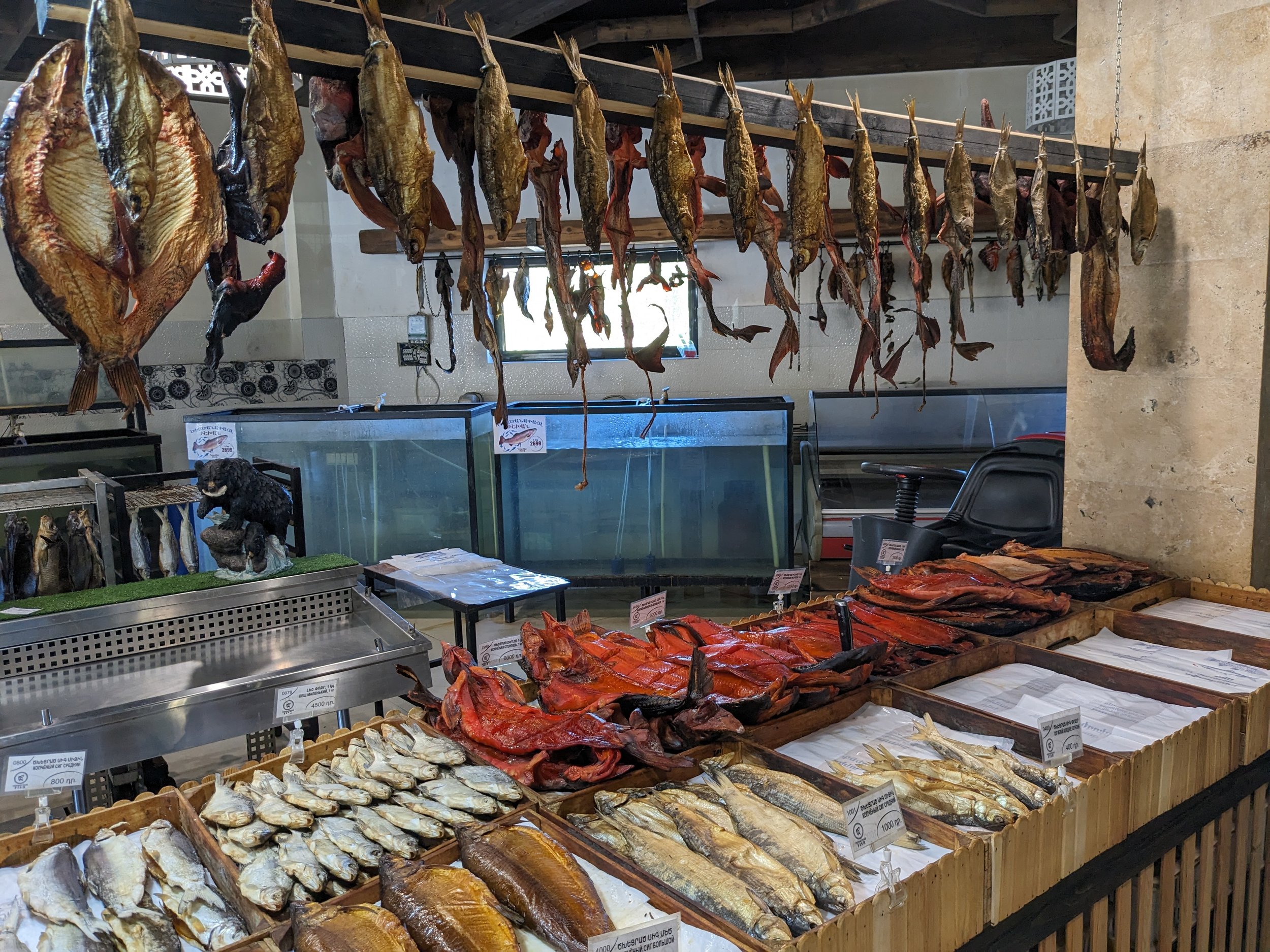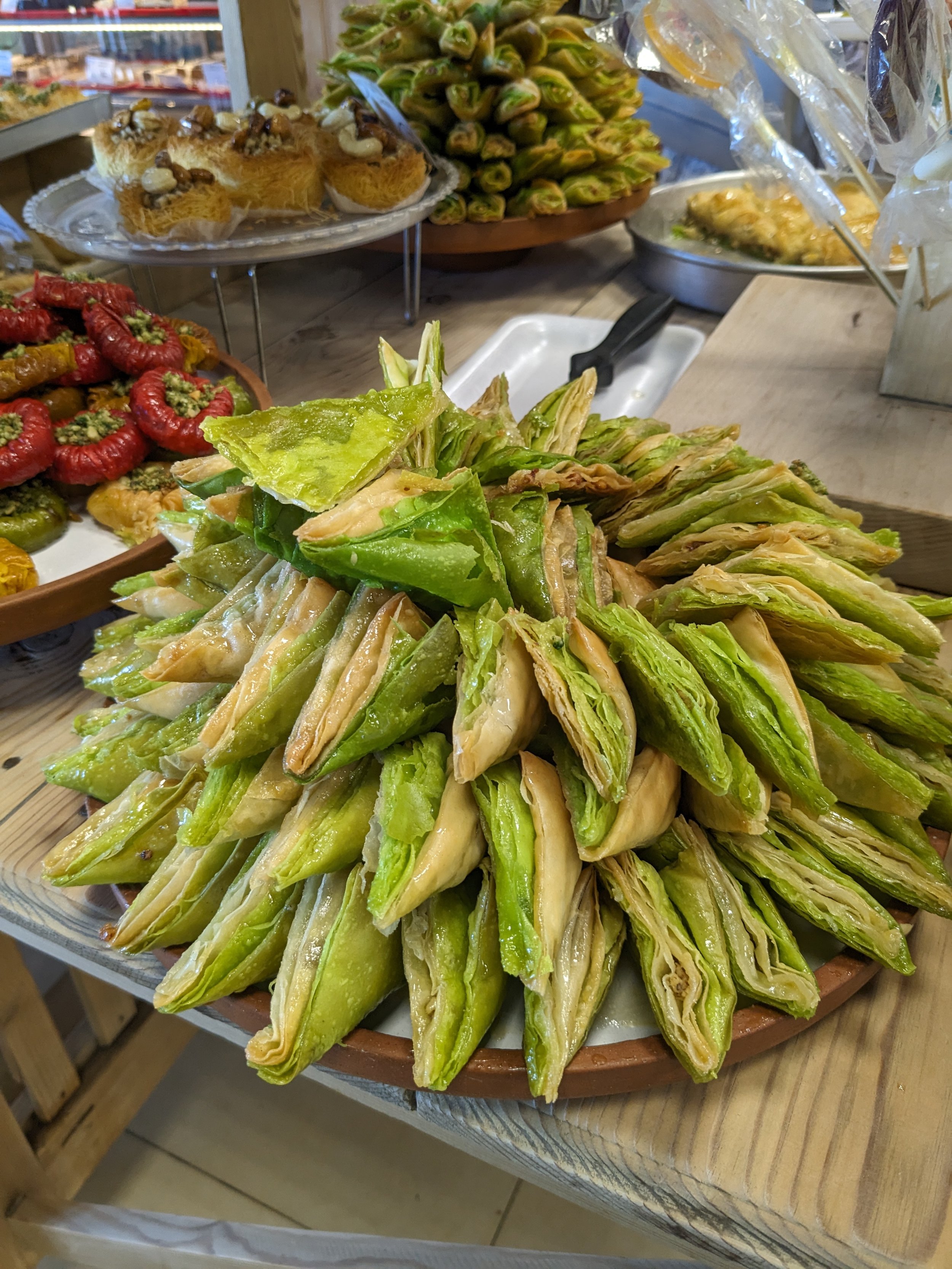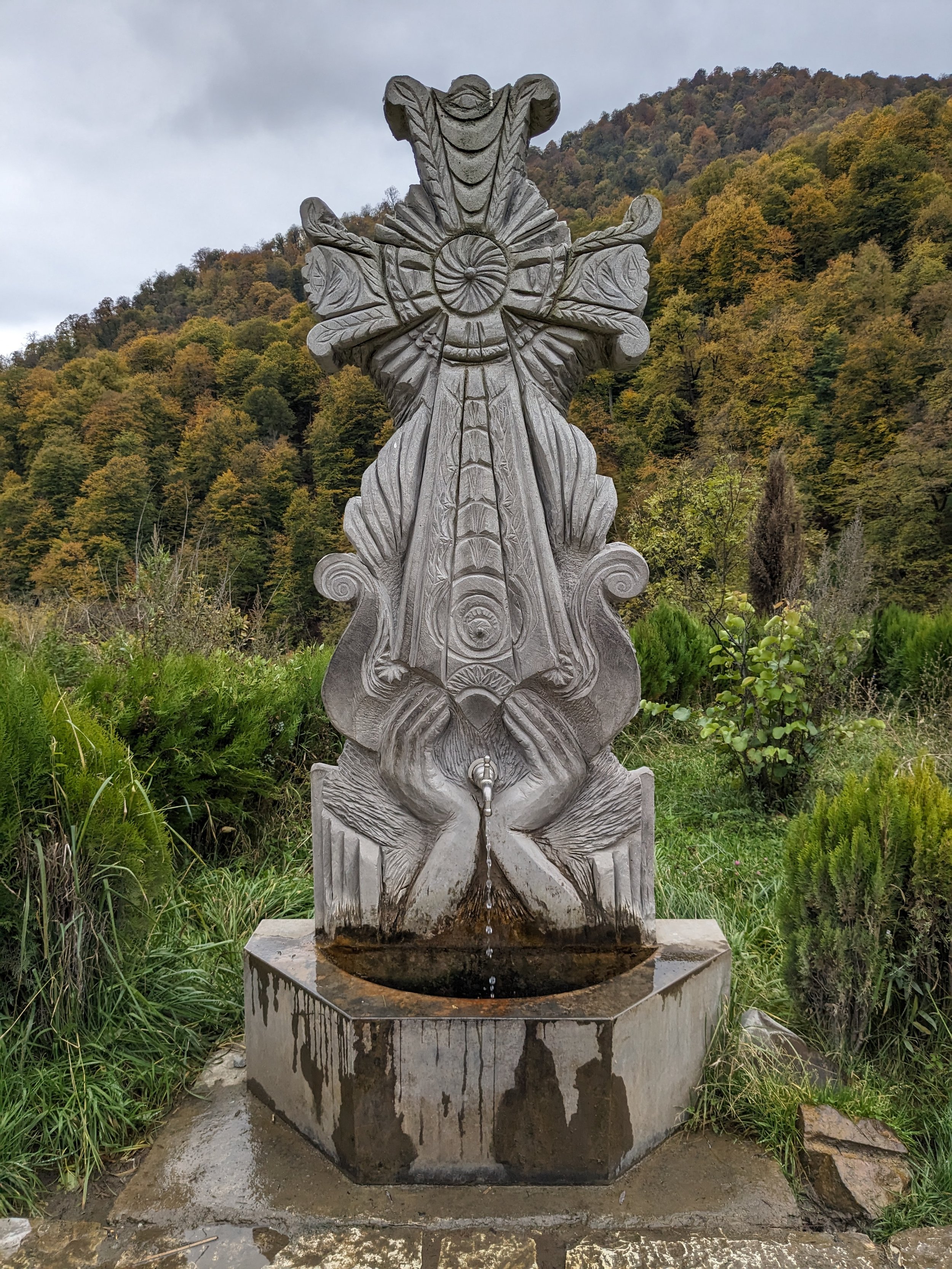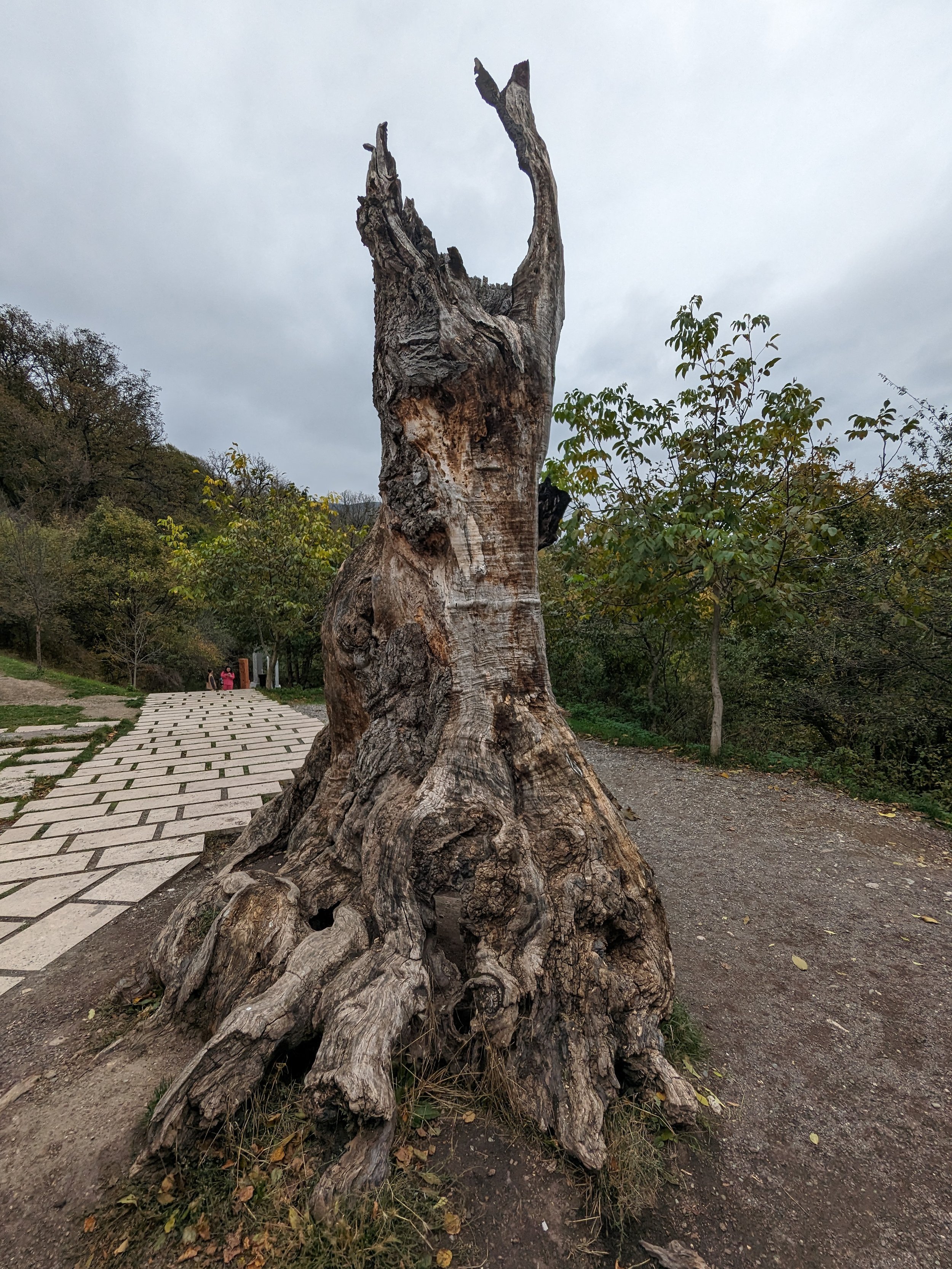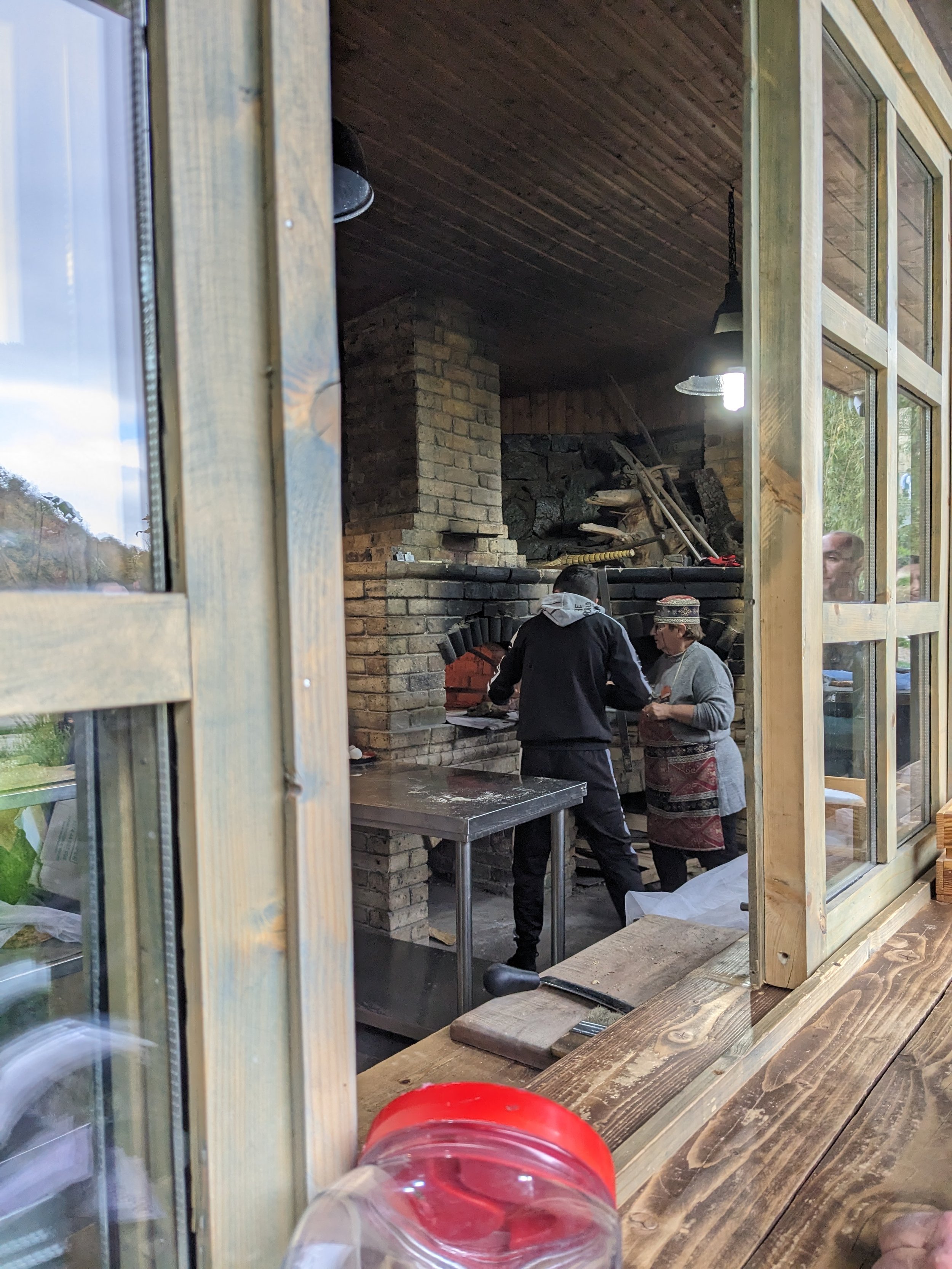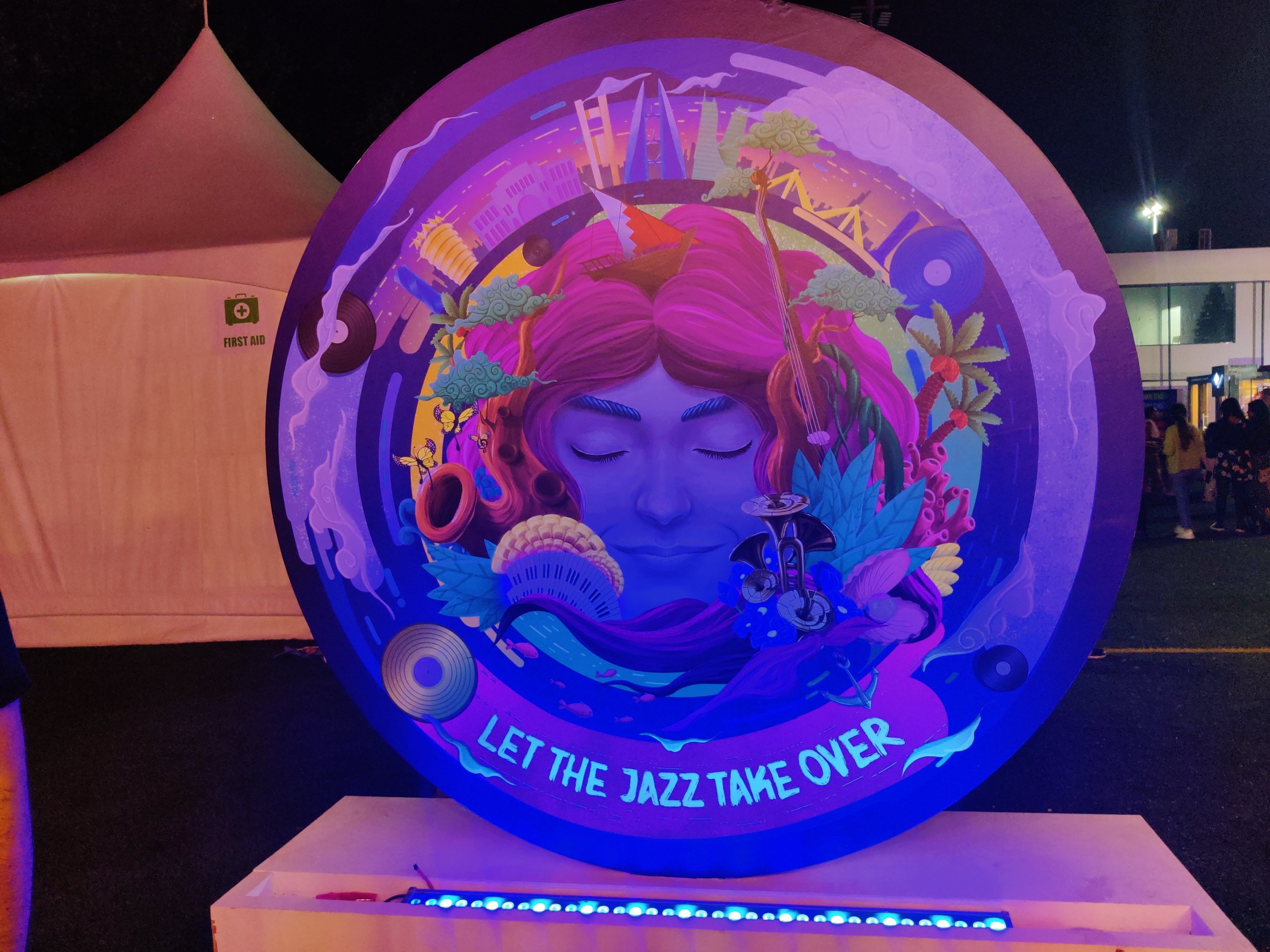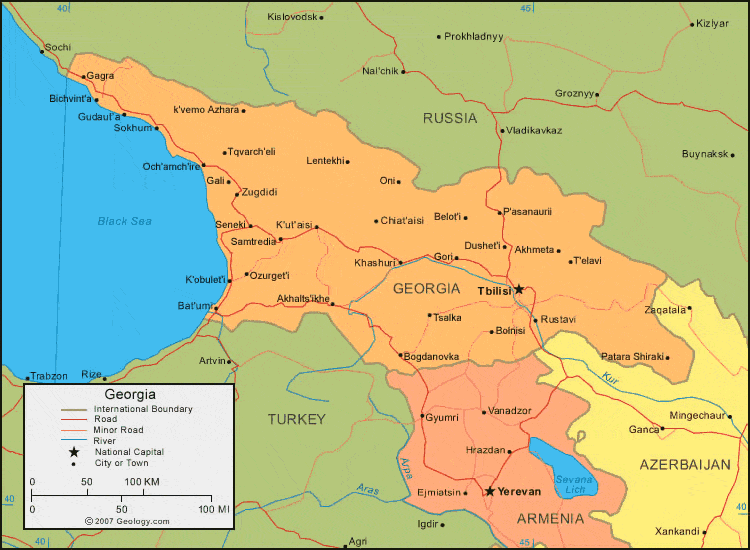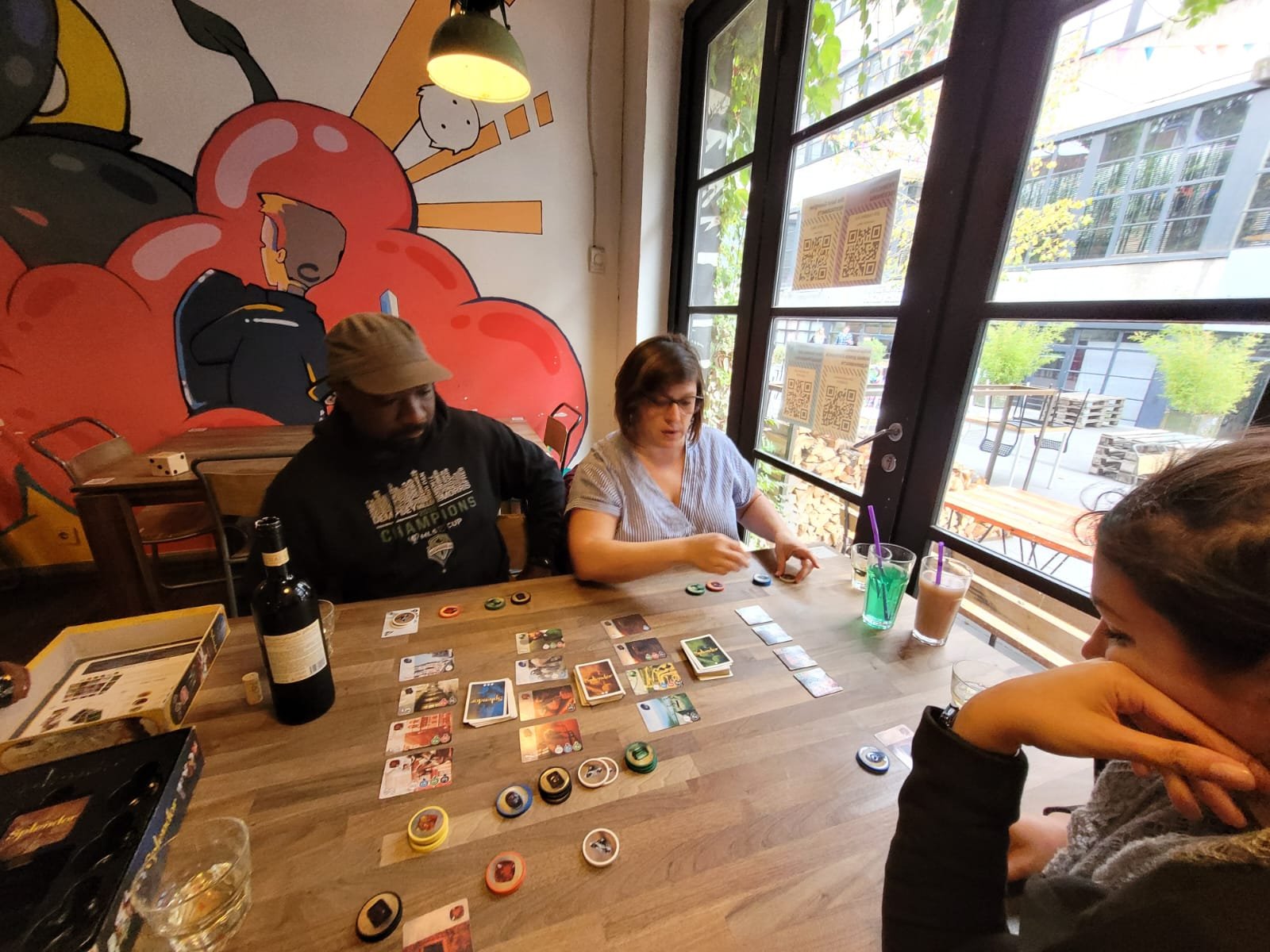Don't Spill the Tea
Technically, Nate did spill the tea about the ins and outs of our weekend away in Samarkand and Tashkent, Uzbekistan. What he didn’t share was the national obsession with tea.
Every country has a national beverage. You might be imagining arak, raki, aguadiente or maybe Miller Light. But according to Pew Research (I know, it’s so pretentious to embed this link), thanks to colonization the world can be divided between tea countries and coffee countries. With the exception of the Philippines and South Korea, “coffee predominates in the Americas and in continental Europe, while tea is preferred in most of Asia and the former Soviet Union.”
Our last few trips to the Caucuses provided us some education on the tea vs coffee divide. Knowing that Georgians and Armenians trade in both coffee and tea, while the Azeris primarily rely on tea, I was curious to see what our journey eastward would prove. To our delight, Uzbekistan was the land of tea. Fruit dominated the scene but the bits and bops of cinnamon, all spice, and anise floated through many pots.
Today, I present to you highlights from our teacation.







Nate wraps up our trip with a cup of strong Turkish tea.
Traveling Through History In Uzbekistan
Originally posted in Nate’s weekly newsletter Takes and Typos on March 17, 2024
The Republic of Uzbekistan was born in August 1991. It was one of the 15 states that emerged from the fall of the USSR. Uzbekistan is landlocked, jammed among its Central Asian neighbors: Kazakhstan to the north and west, Hermit-ish Turkmenistan and Afghanistan to the South, and Kyrgyzstan and Tajikistan to the East. In recent decades the country has leveraged its natural gas and mineral wealth to modernize its infrastructure and cities.
Manti, Uzbek style dumplings
Like the rest of its Central Asian cohort, the country is geographically and politically situated between Russia and China and resides in the spheres of each state. We noted this repeatedly in our travels. When we took the train from Tashkent to Samarkand, we rode along rails laid during the Soviet era but on a high-speed train car, manufactured in China. The metros in Tashkent are built in the ornate Soviet style that Tucker Carlson recently gushed over in Moscow. One of the two national dishes is manti, a dumpling dish that arrived in the country from China along the Silk Road.
Upon arriving in Tashkent we found the capital busy, clean, and notably quiet. I’d say 60% of the women wear hijab but more in Samarkand than Tashkent. Uzbeks are very reserved people. They don’t smile much; they don’t chatter much in public. They greet each other quietly with a handshake and a meeting of the forehead. I joked to a friend this week that "full metro cars and weekend markets in Tashkent were quieter than three Jordanian dudes having lunch."
The Gūr-i Amīr mausoleum of the Turco, a Turkic Conqueror
Like Azerbaijan, which we’ve previously visited, the leader of Uzbekistan during the Soviet era, Islam Karimov, became the president after independence and ruled until his death in 2016. The country began to open itself to tourists in 2018. We saw other travelers in both Tashkent and Samarkand, but most of them appear to be Russian or Kazakh.
The historical sites in Uzbekistan are incredible. We toured mosques and madrasahs that date back to the 1400s and visited ruins the result of the Mongol conquest in the 1200s.
From what we could tell, Uzbeks don't really have a cafe or bar scene. This makes sense given the cold climate and conservative culture. On a few occasions, we walked towards busy-looking streets expecting to find restaurants or cafes and came up empty-handed. But the food we had was wonderful. Uzbek food is hearty, which again makes sense given the winters. The other national dish, plov, is a rice dish with stewed meat and vegetables—a Central Asian paella or biryani. It is also notable that people in Uzbekistan are decidedly tea, rather than coffee people. This was great for me because I don't particularly like coffee. I typically only drink the occasional espresso when I'm traveling. But I love tea and drank it at every opportunity possible.
Plov, an absolute banger of a rice dish
In preparing for our trip, I came across several videos calling Uzbekistan the “cheapest country in the world.” I thought these were tacky and felt a touch exploitative. That said, if you are budget-sensitive, traveling to Uzbekistan is affordable. The US dollar trades at 1:12,500 Uzbeks Soms. Most of the meals we had were in the neighborhood of 150,000 soms, so under $12 for two. The best meal we had, manti, plov, and tea service, at an understated cafe in Samarkand, was eight bones.
Tashkent very much has a Soviet feel. On a couple of occasions, we found ourselves taking multi-block detours to get around government ministry compounds. There are police everywhere. In our prior travels in post-Soviet states, we have found a vibrant nightlife and restaurant scene around Freedom or Independence Square. Not so much this trip. In Tashkent, Independence Square is in the middle of a quiet park.
Independence Square in Tashkent
In closing, let's talk about traveling while Black for a moment. Racism is real and not everywhere is safe for everyone to travel. I am not saying I am the first Black person to ever go to Uzbekistan but I didn't see any other brothers and sisters, and many of the people I encountered acted like I was the first Black person they'd ever seen in real life.
In a phenomenon I have not experienced since going to Beijing, in 2014, I was repeatedly asked by people to pose for photos. I obliged the first few. Hope overheard someone practicing saying “Welcome to Uzbekistan” in English before approaching us. As we walked through the Registan, I heard a couple of people yell “Hey, New York!” and wave.
That said, The people were very chill. I felt no hostility toward me. If you are a Black traveler you shouldn't have unusual safety concerns in Uzbekistan.
On the whole, this was a great little adventure. The people of Uzbekistan are welcoming. The food is solid to great. The history is unavoidable and compelling–it’s literally in your face everywhere you go. When I was a kid in geography class, Pyongyang, Tashkent, and Harare were the most exotic sounding places on Earth to me. It’s really cool that I got to visit one of them.
Cornering the Caucasus: Yerevan
City Center, Yerevan
The crisp fall air hit our faces as we stepped outside the airport and bulky men with cigarettes precariously pinched between their lips offered “taxi?”
Yerevan in October is picturesque–reminiscent of any bustling city in the throes of the fall season. Red, orange, and yellow leaves dot the sidewalks. Couples laughing over wine or brandy at a local cafe. Tourists wide-eyed, trying to read signs in Armenian and English. Bakeries, hookah bars, and shaurma shops (yes, the spelling is different) line the street inviting you to take a moment for yourself.
One of our favorite things to do in a new city is just walk. We let “the spirit lead” the way as we turn down narrow alleyways, stop for an espresso, or decide to pause at a beautiful church.
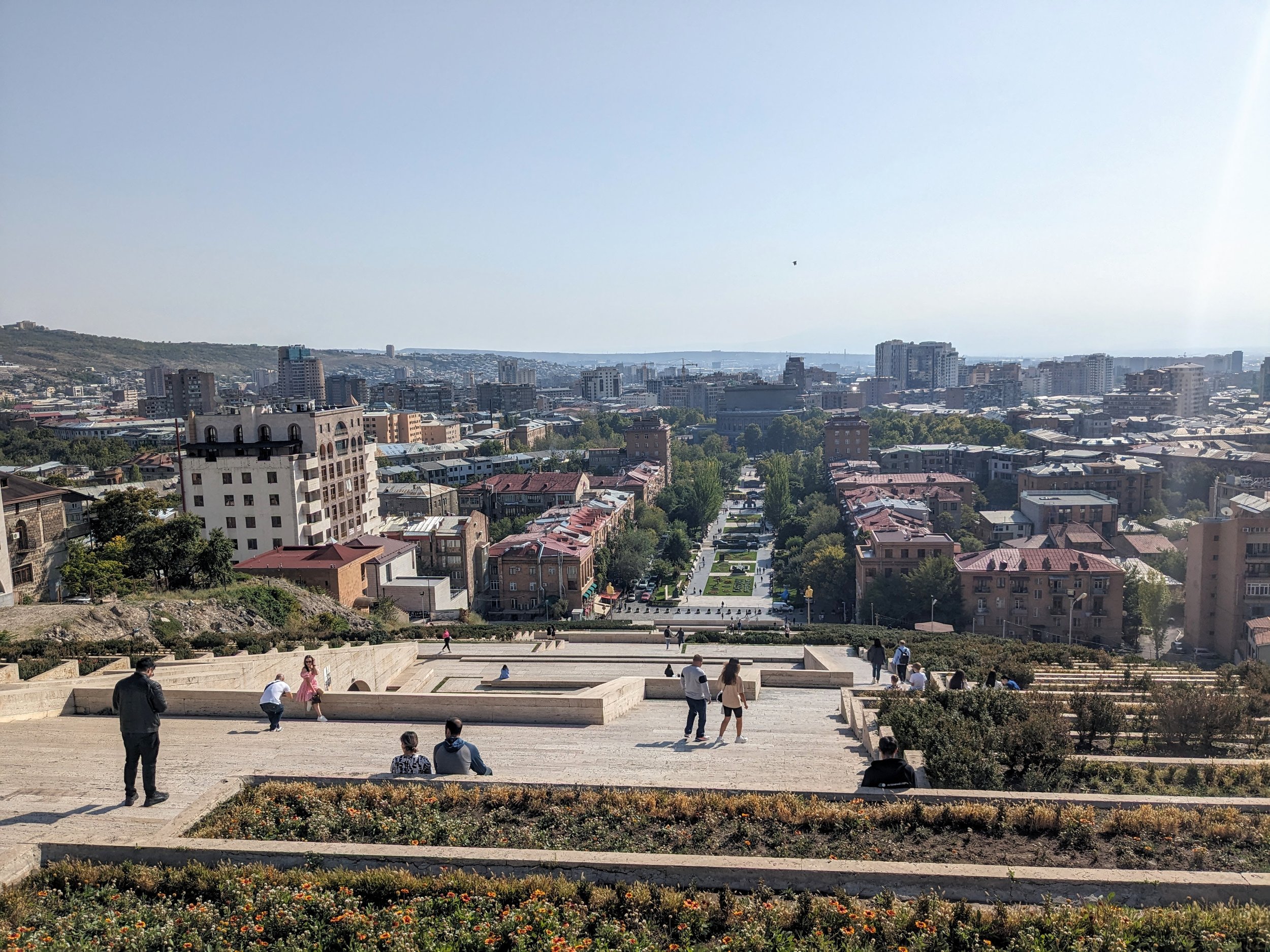

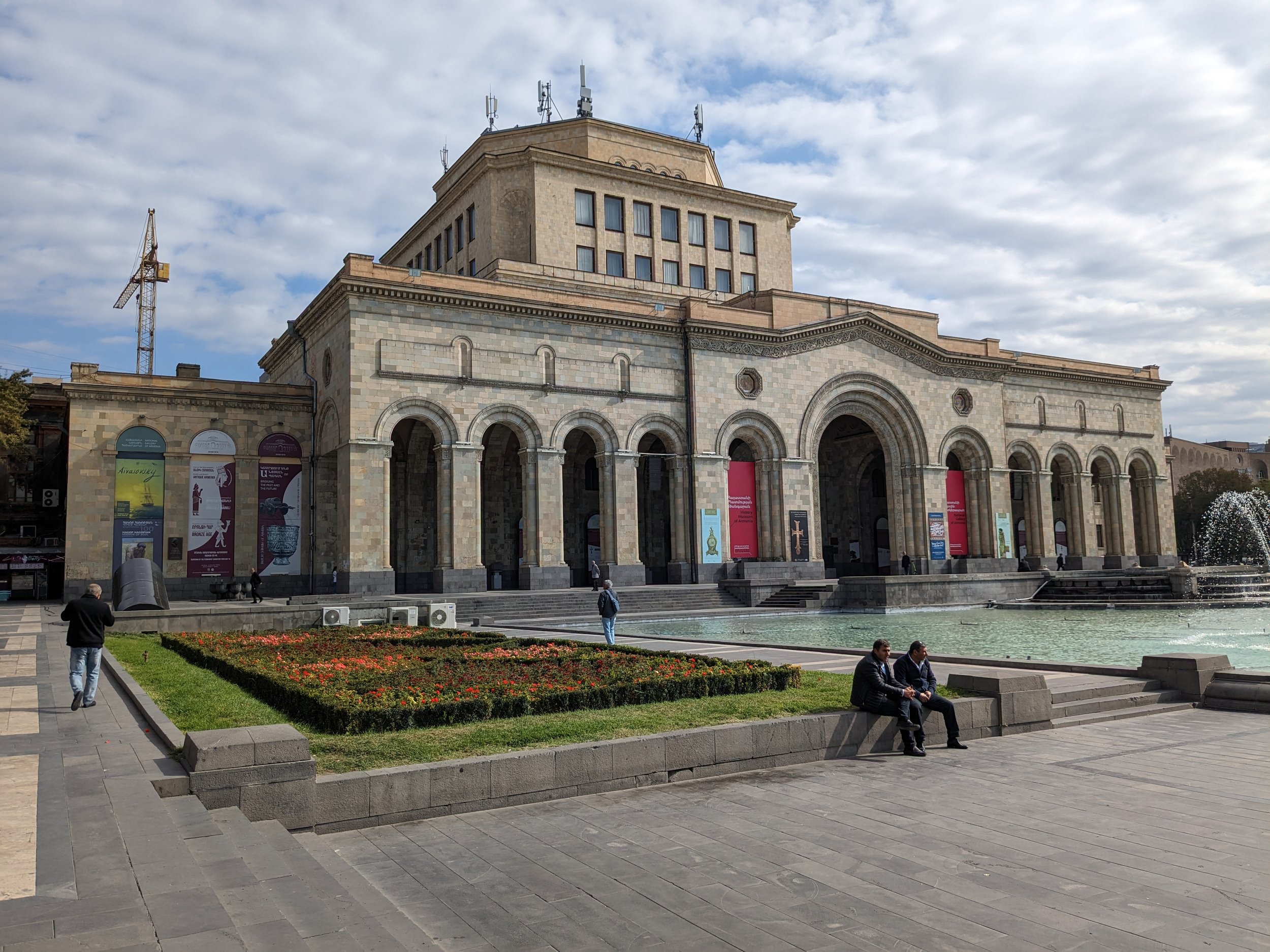
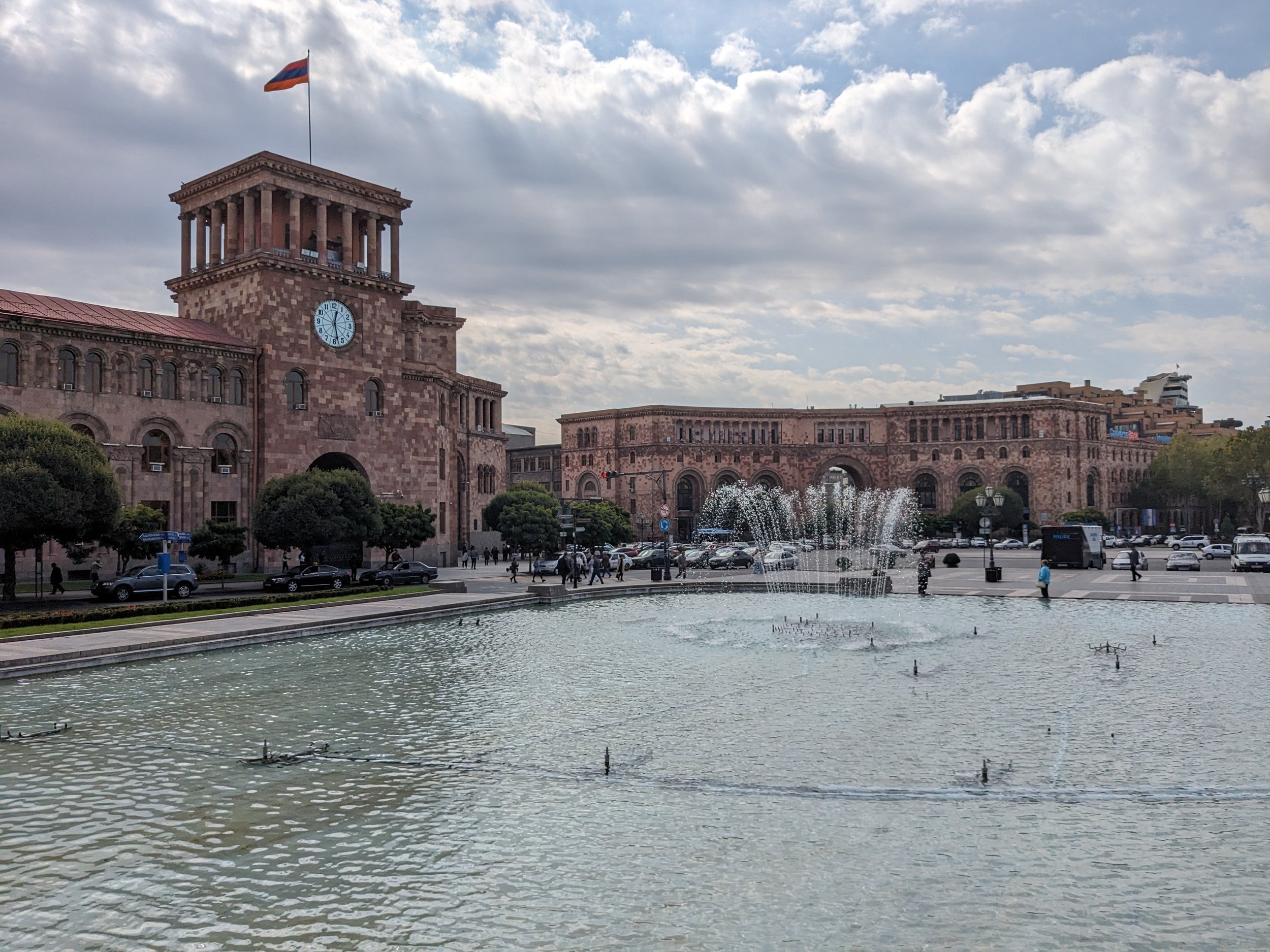
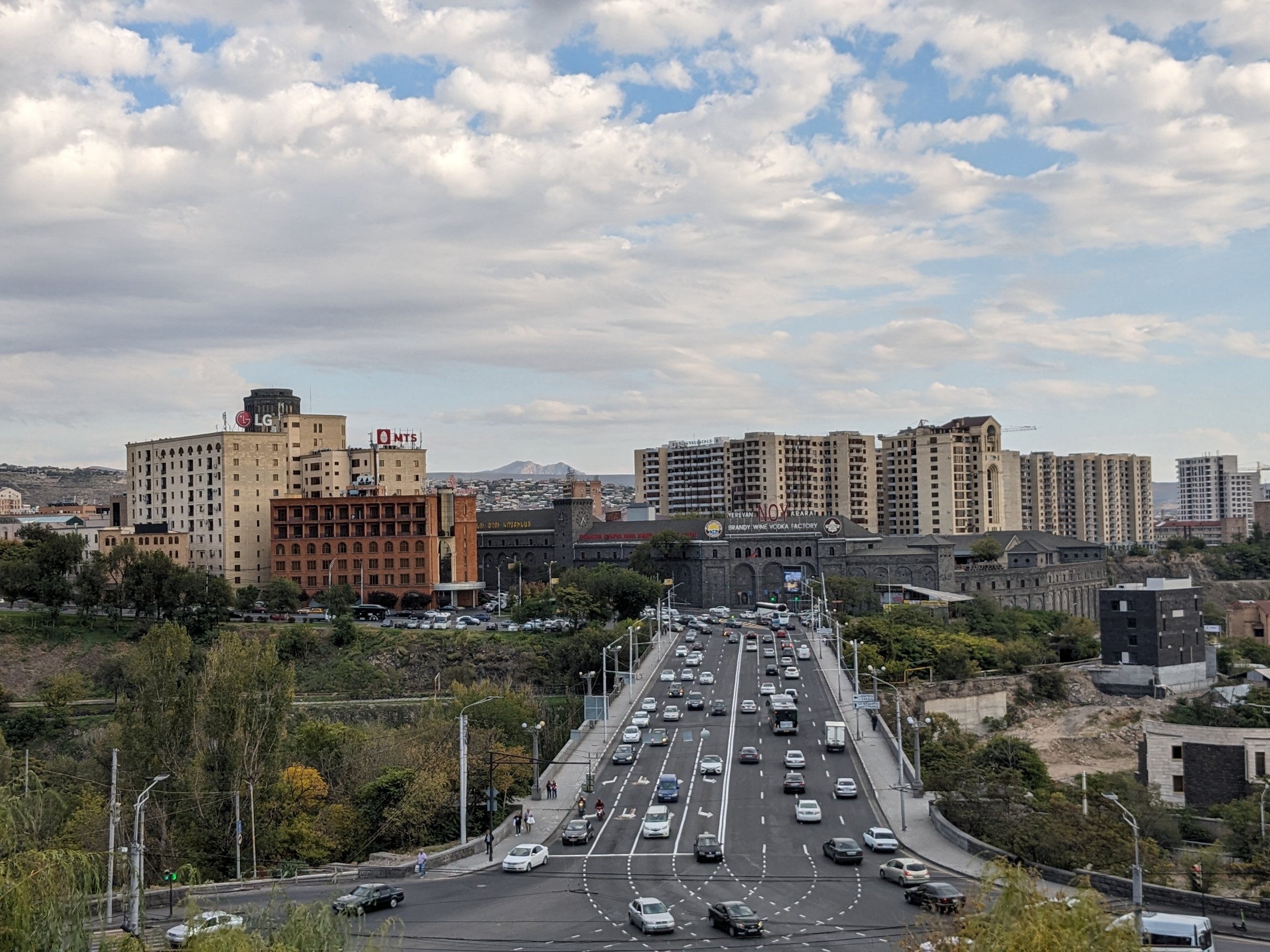
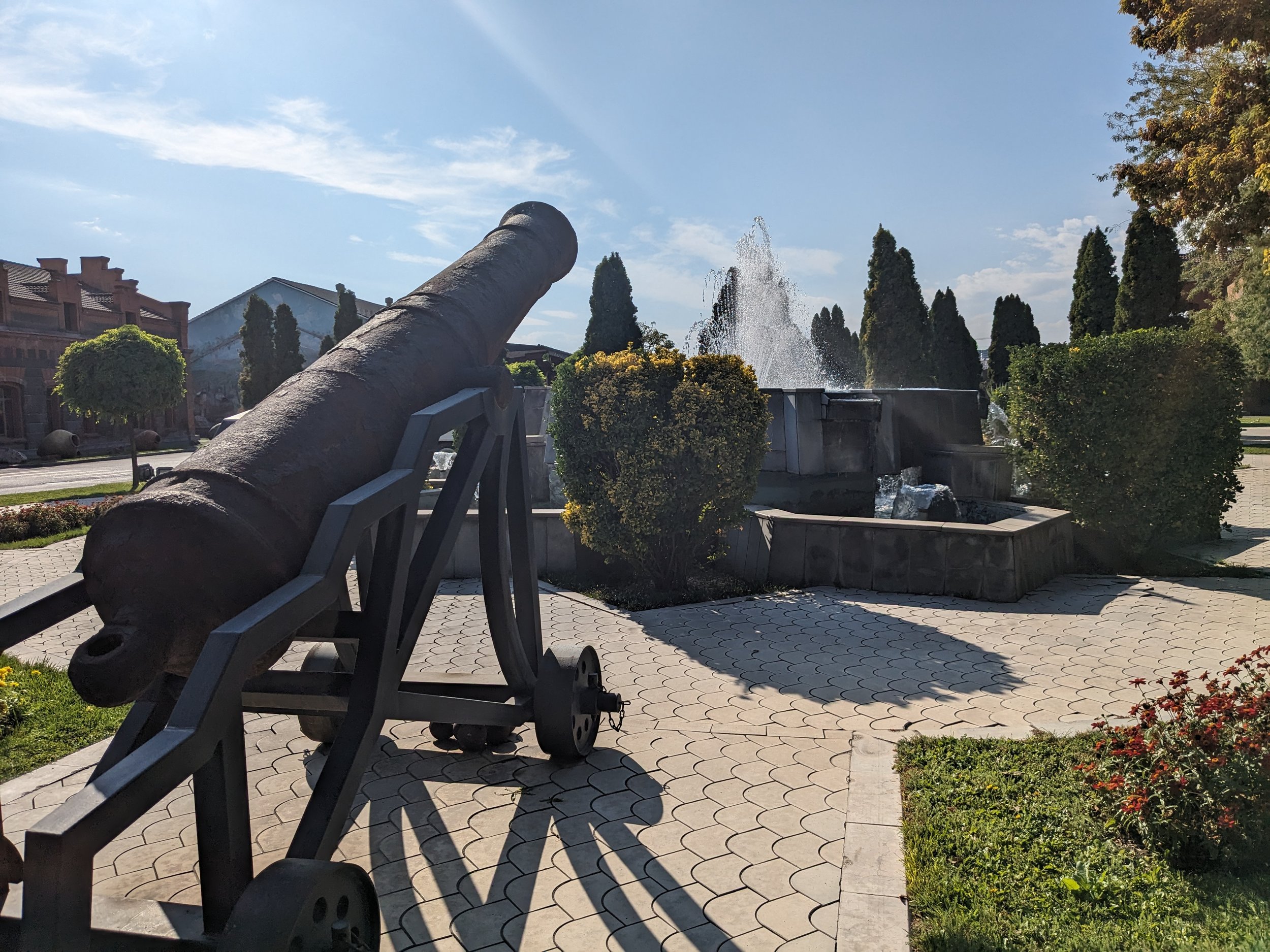
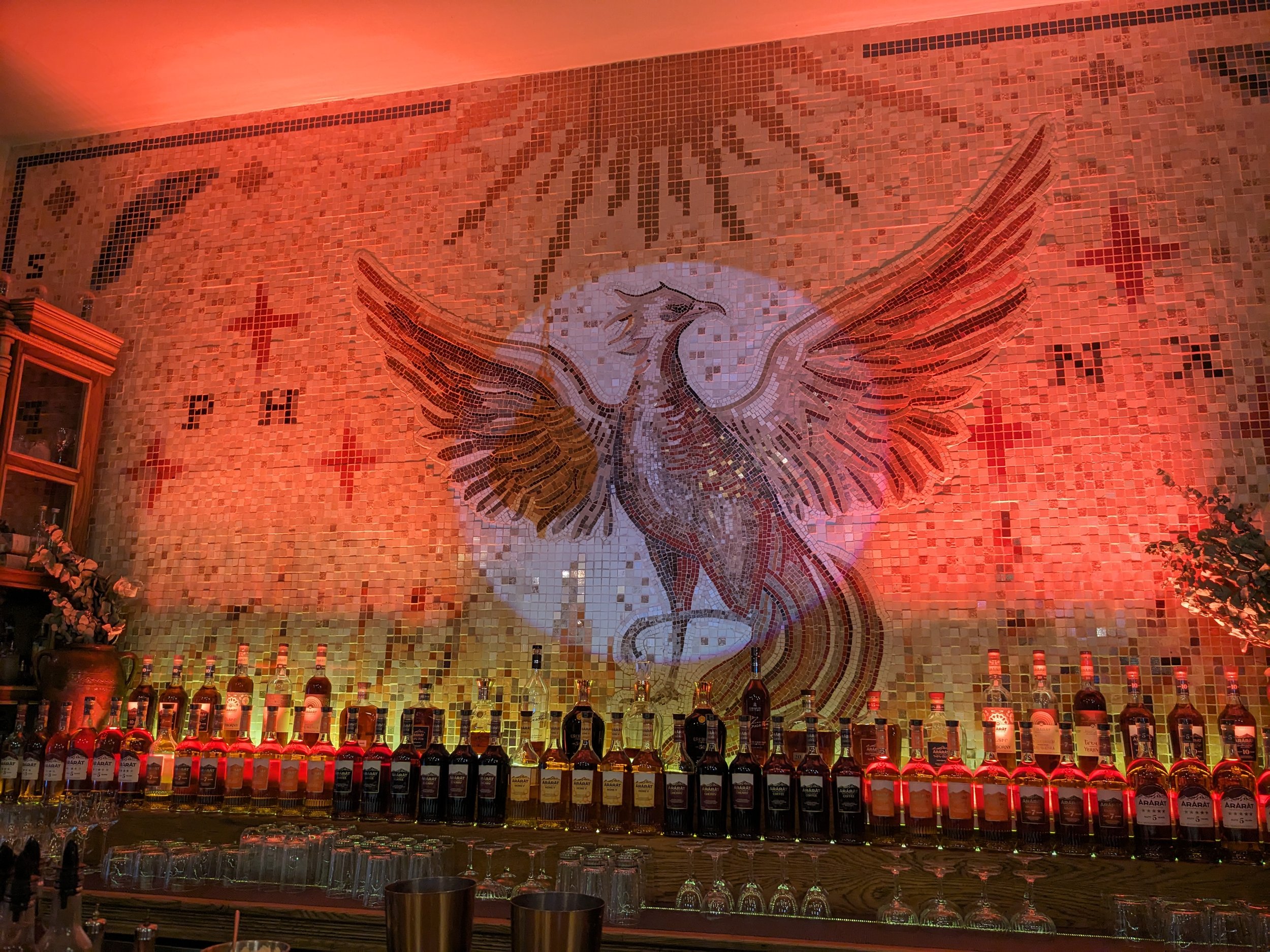
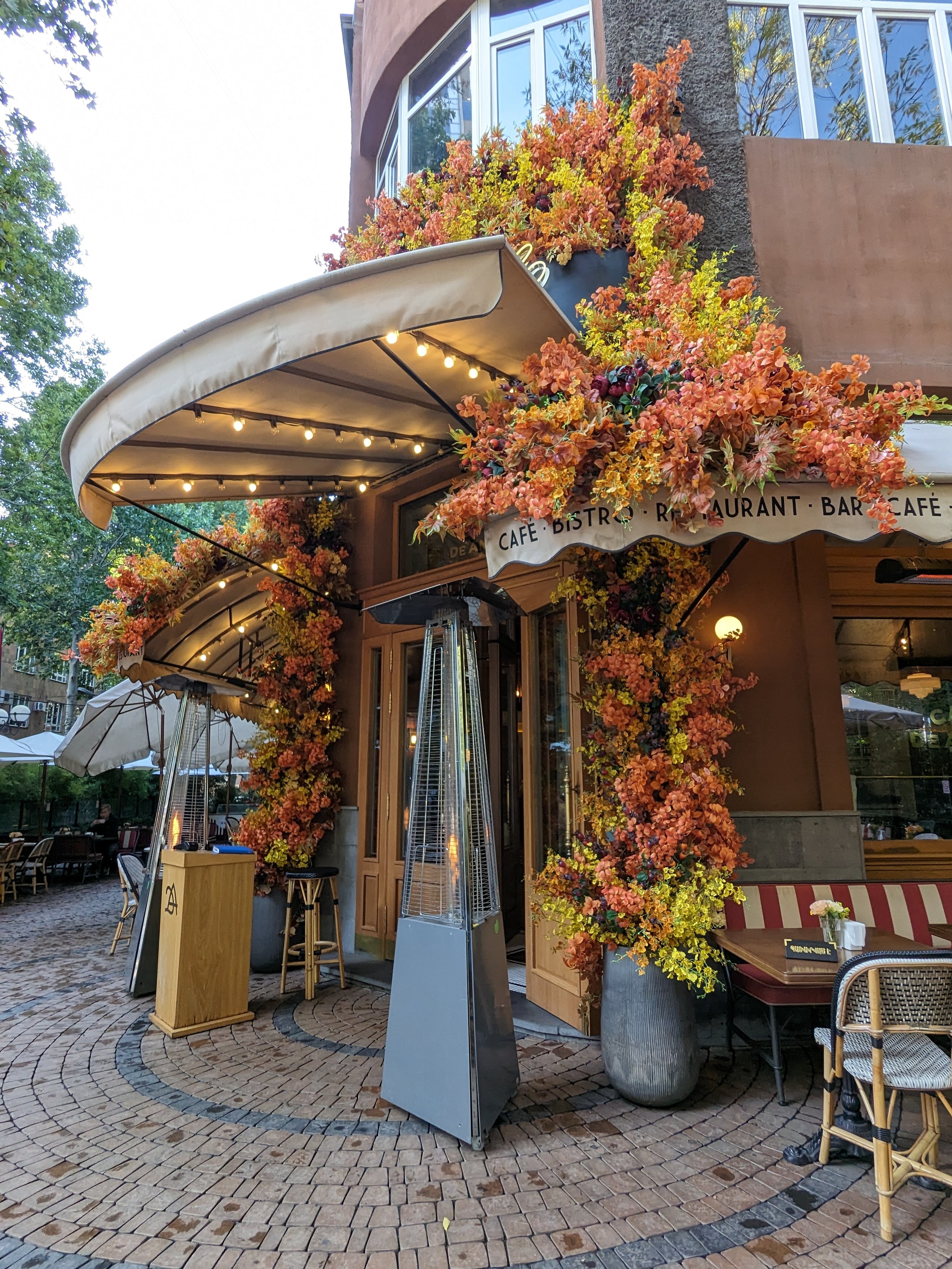

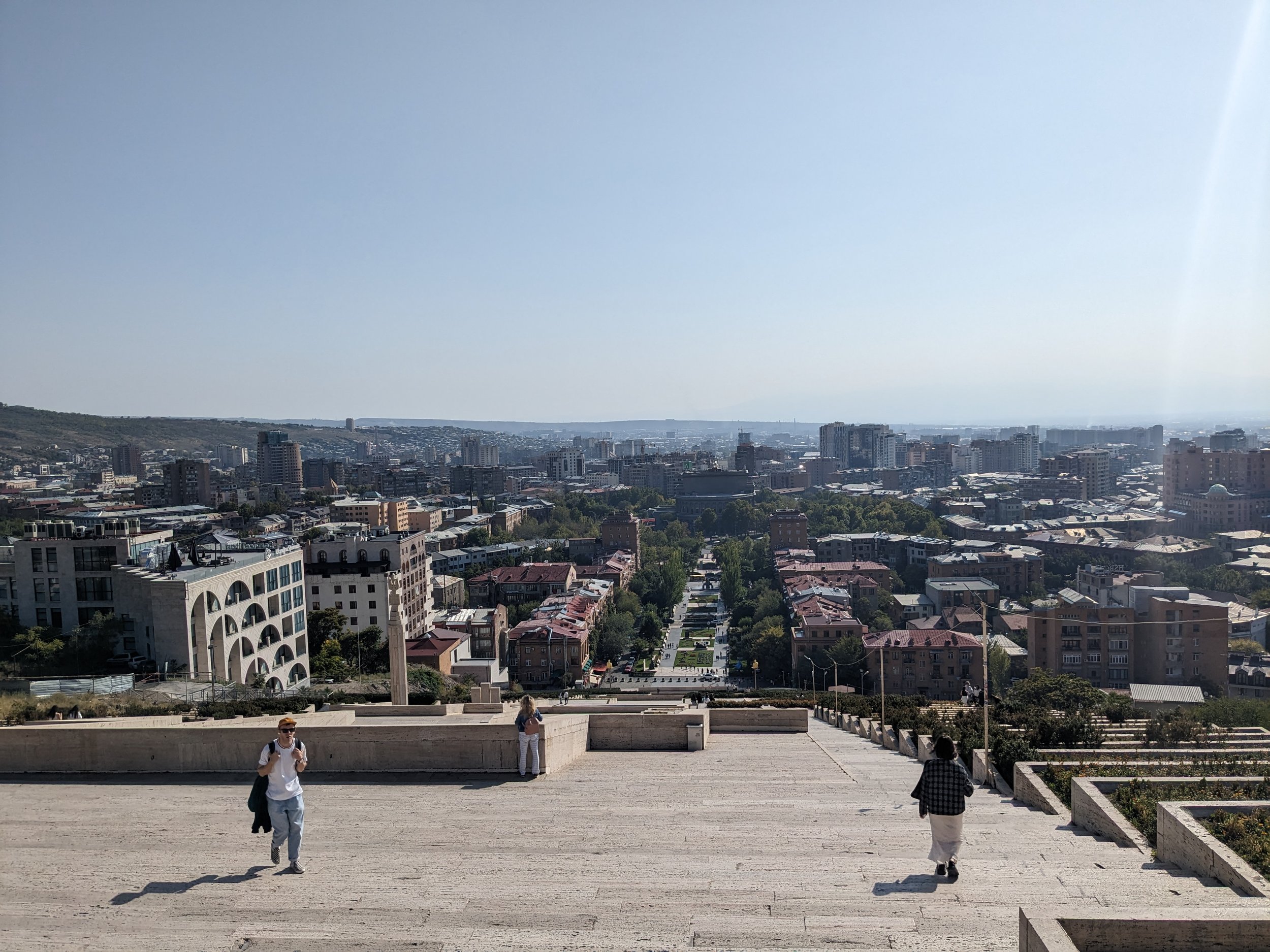
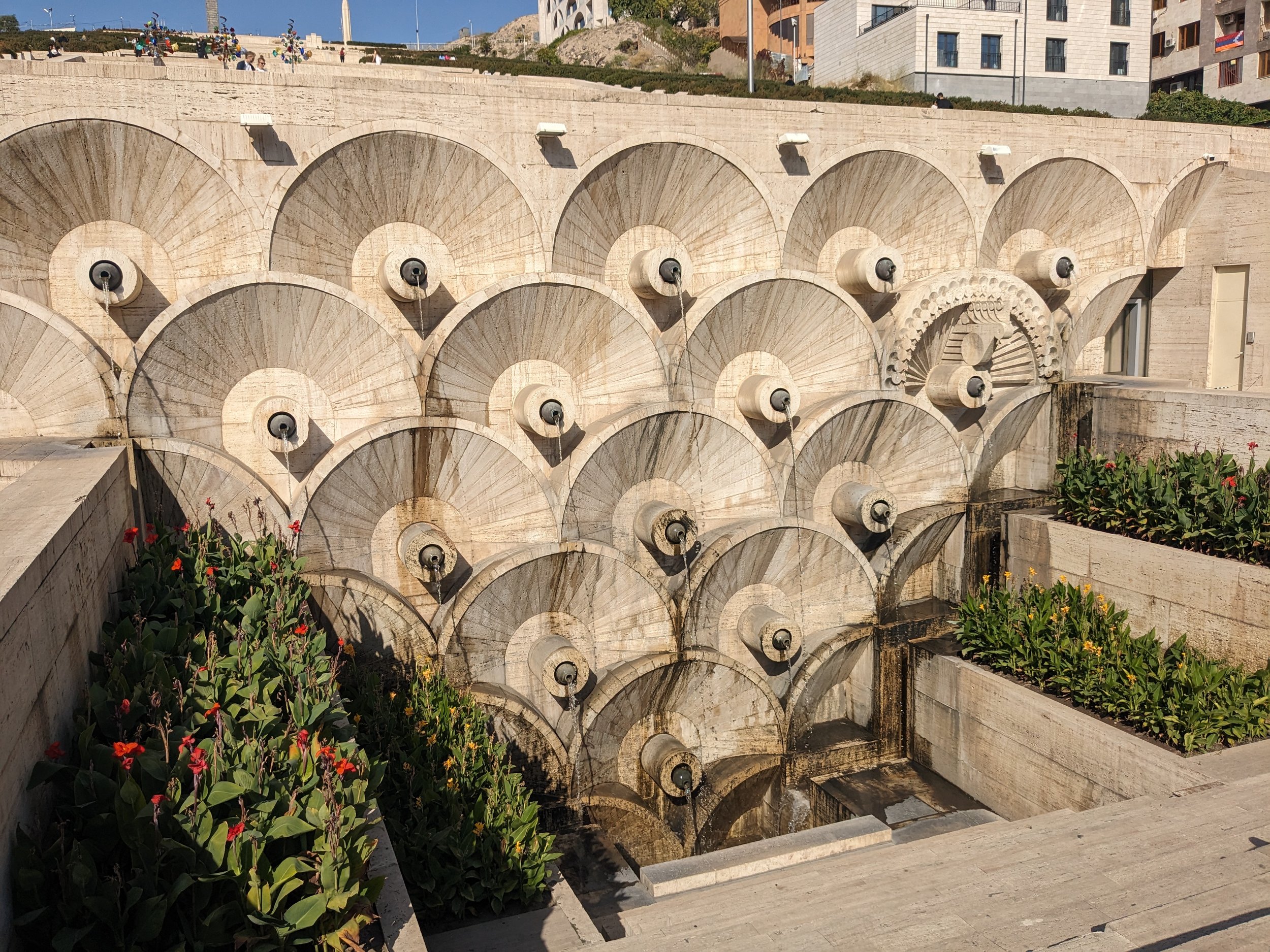

The City
While Yerevan feels like so many cities we’ve traveled to, it also has its own beat. One distinguishing element is the towering and magnificent Mount Ararat in the background. We could never actually capture this on camera but often found ourselves staring at it. Another aspect is the undercurrent of a complex history informing the daily lives of people today as Nate noted in his blog post.
Nate thinks she looks like my grandma…
The Blue Mosque (image to the right) is the only mosque remaining in all of Armenia, serving as a place of worship, a museum, and a language center. A lovely Armenian woman originally from Iran gave us a short tour of the grounds, leaving us with stories of the past and a tour of her classroom where she teaches Russian!
A trip to Yerevan would be incomplete without a visit to the Armenian Genocide Memorial & Museum. Obviously as educators, we prioritize learning about a country’s history–even the tough parts. As awful and heartbreaking as the experience always is, we are forced to see humanity's most cruel moments and consider how we might live today with more empathy and kindness to those that are different from ourselves. It’s also a reminder why telling a group of people to “get over it” when it comes to such atrocities is ridiculous. Be it about slavery, the Holocaust, the Armenian Genocide, or what’s happening in Gaza today, pain and trauma is deeply rooted in a community and it takes immense effort to take steps towards healing.
Day Trips to the Countryside
As we age, we find ourselves succumbing to local tours. In the old days, we’d hop on public transportation, gesture our way through a bus station terminal or haul our backpacks on a train. I’m not above that by any means and don’t get me started on my favorite places in the world and their beautiful metro systems (Mexico City, I see you. Hong Kong, I have not forgotten).
Adding complexity is that some places we travel would be too stressful to try to drive through. The Armenian countryside proved to be such. As we dodged cows, followed detours through villages, we appreciated our driver, Edgar’s adept ability to maneuver the minivan as we focused on Nina’s tour.
First stop Sevanavank monastery overlooking Sevan Lake.
A quick stop for lunch at a popping side-of-the-road cafeteria, the Tsovagyugh supermarket and food court. Note the lavash is easily the size of a throw-blanket!
Next up Goshavank monestary built in the 10th-13th centuries. Words cannot describe the serenity and wonder I felt standing on these grounds, imagining this as the hub of community it provided.
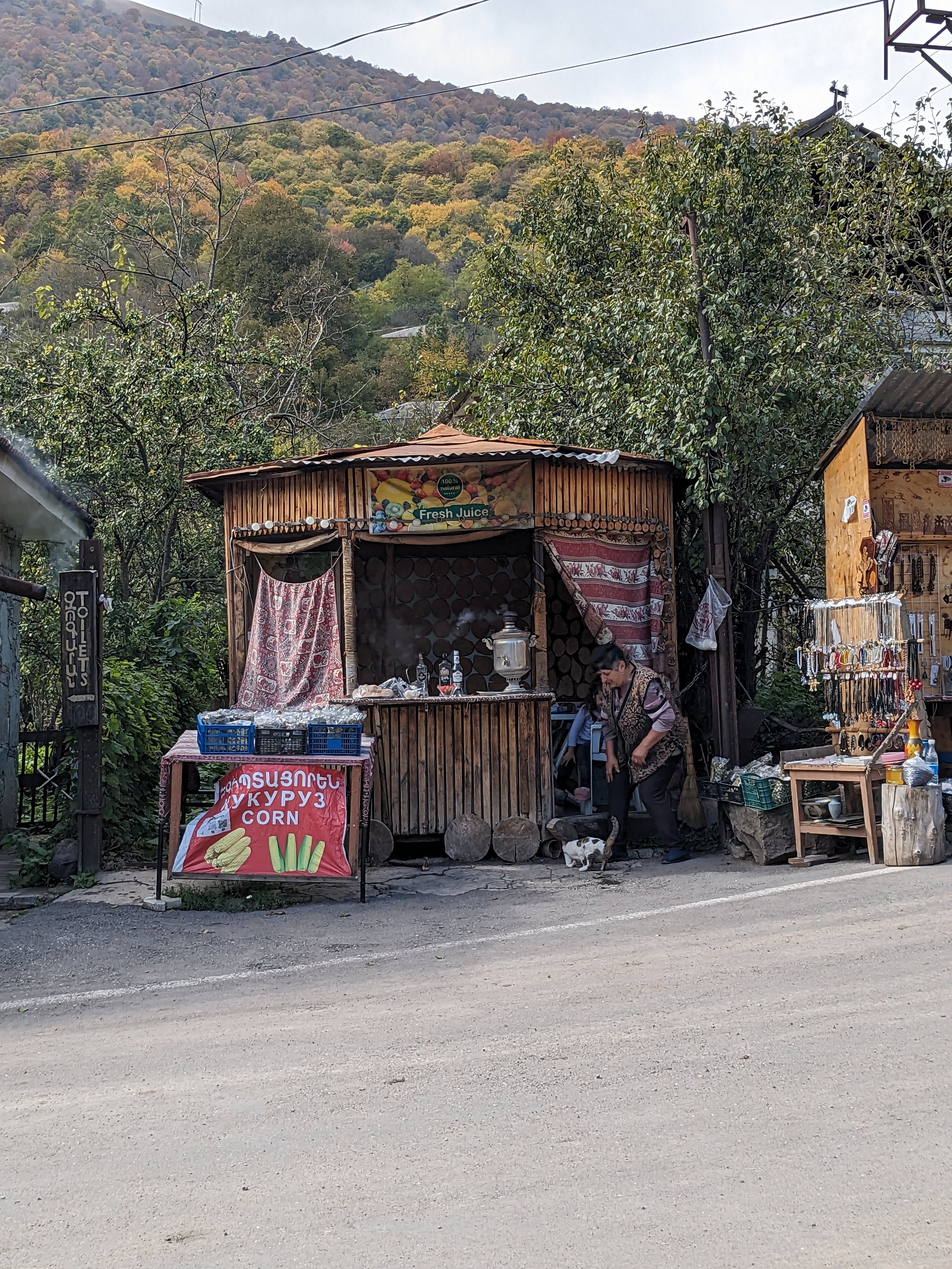
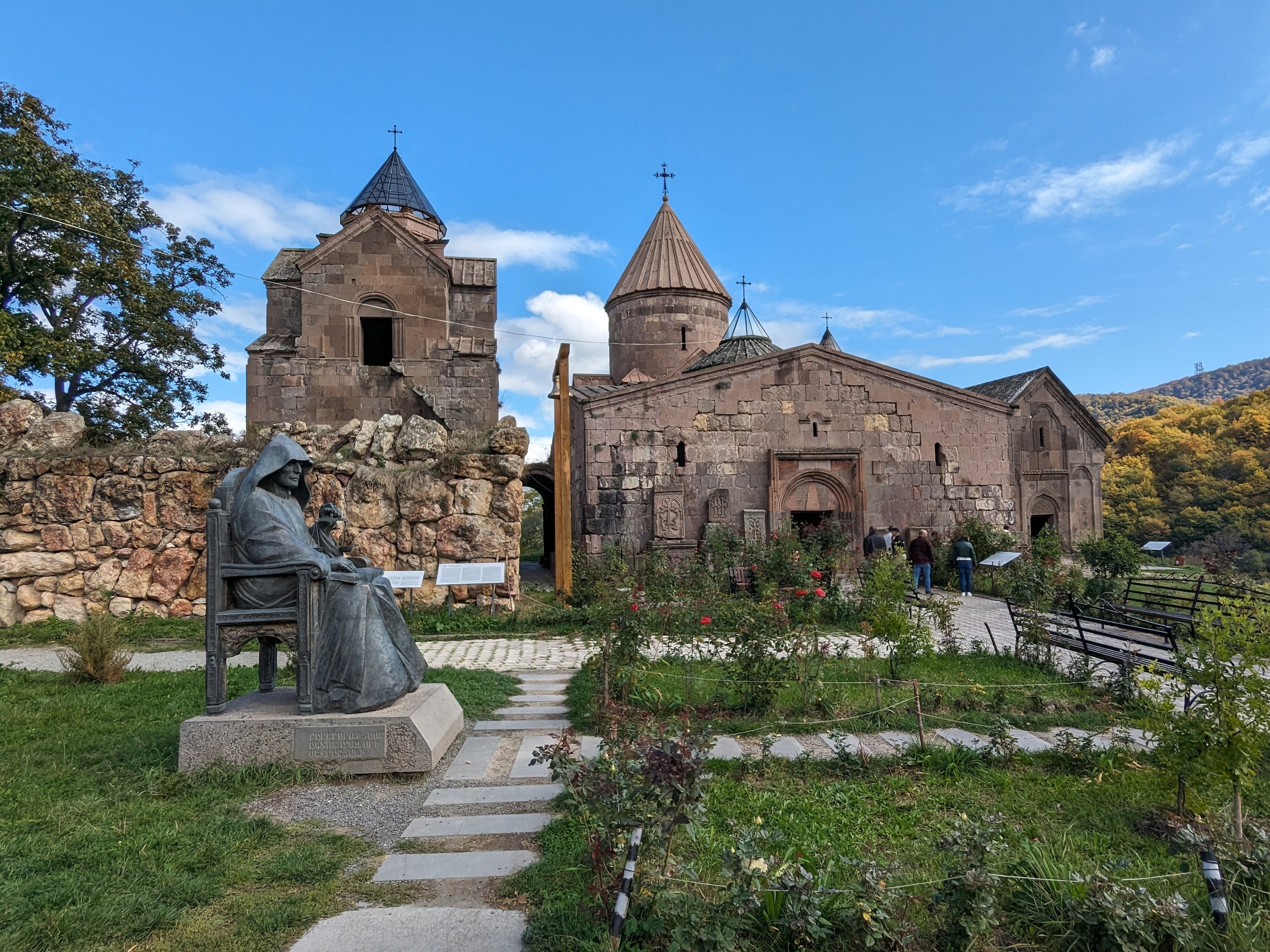
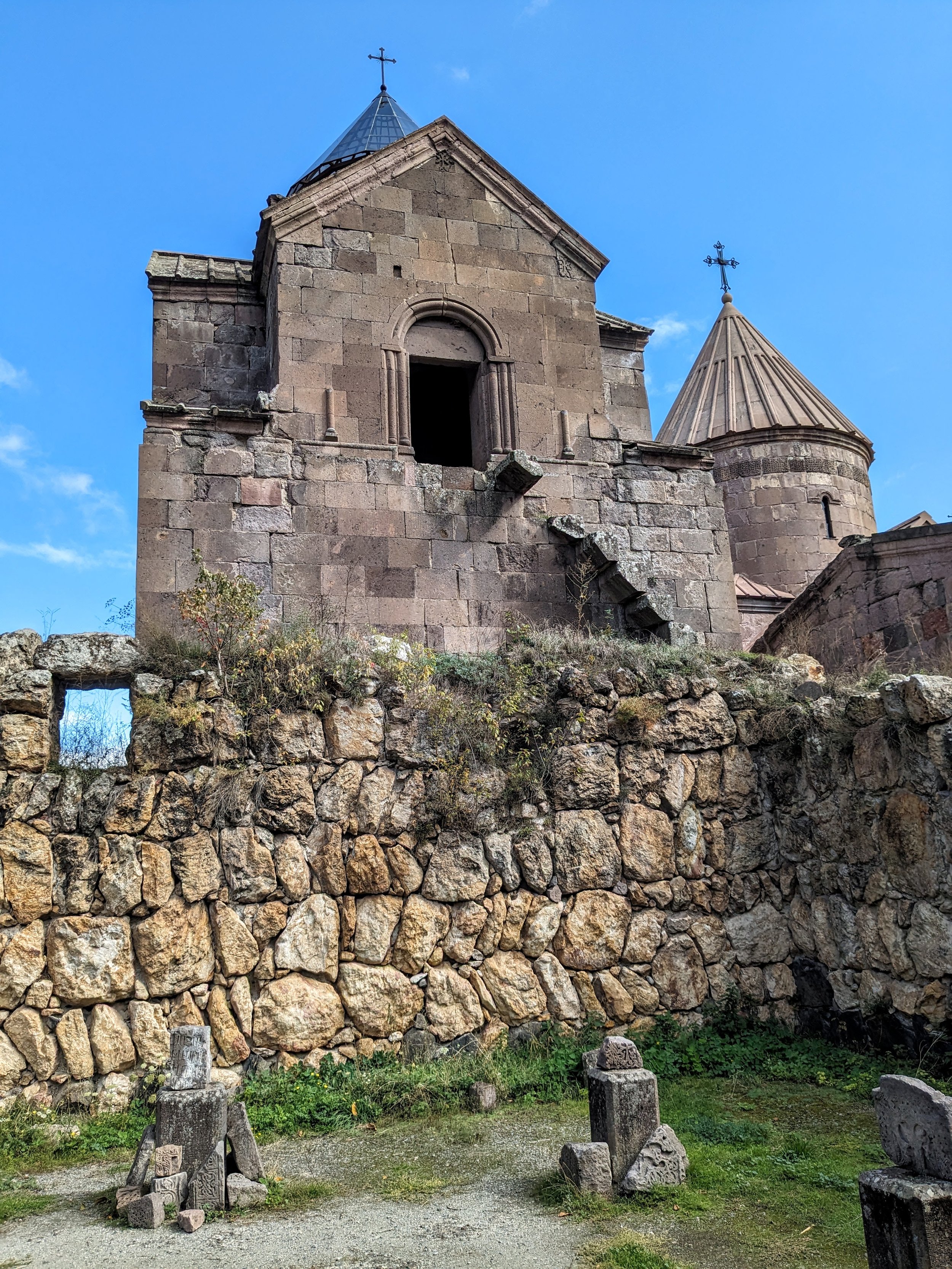
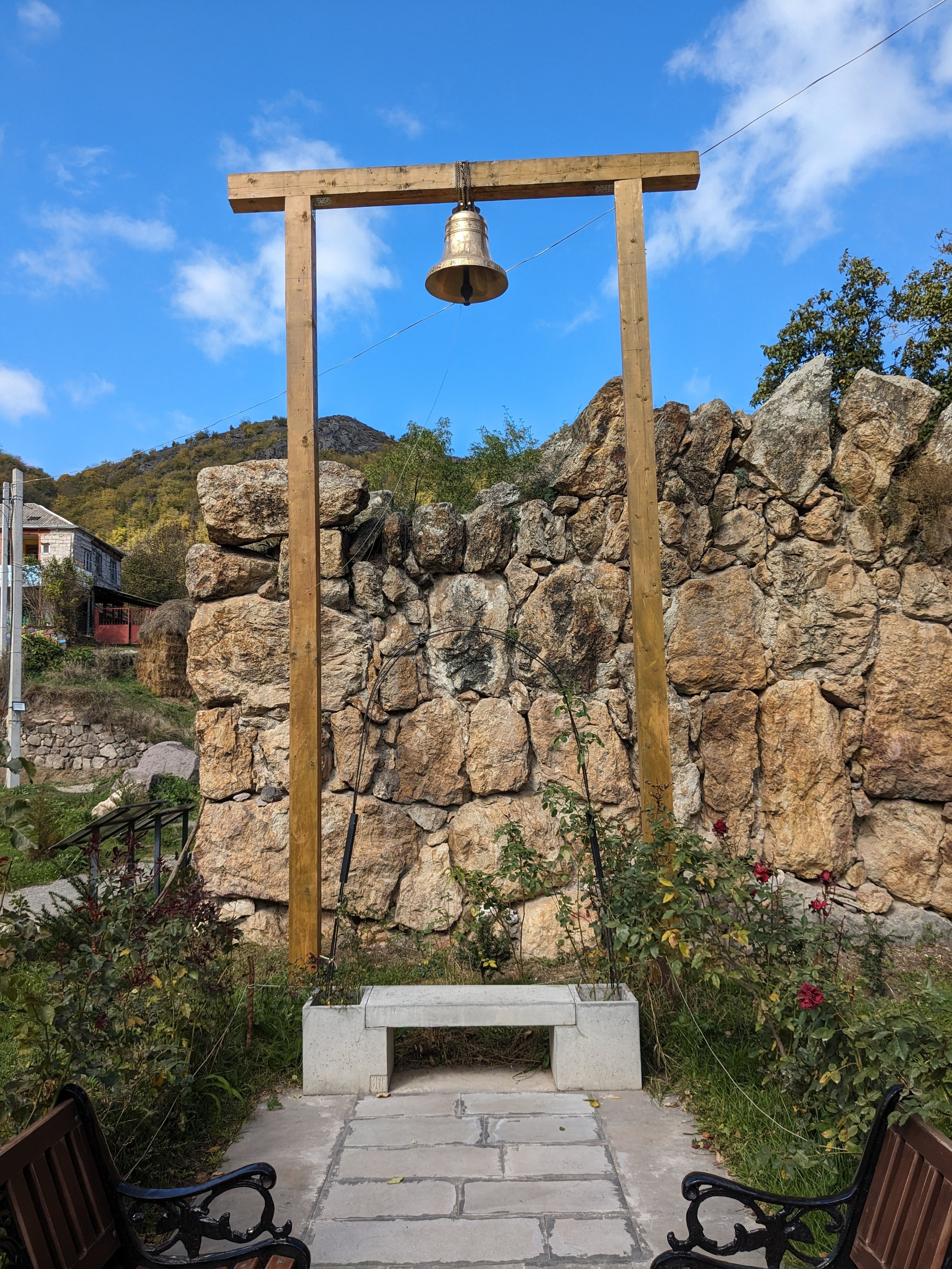
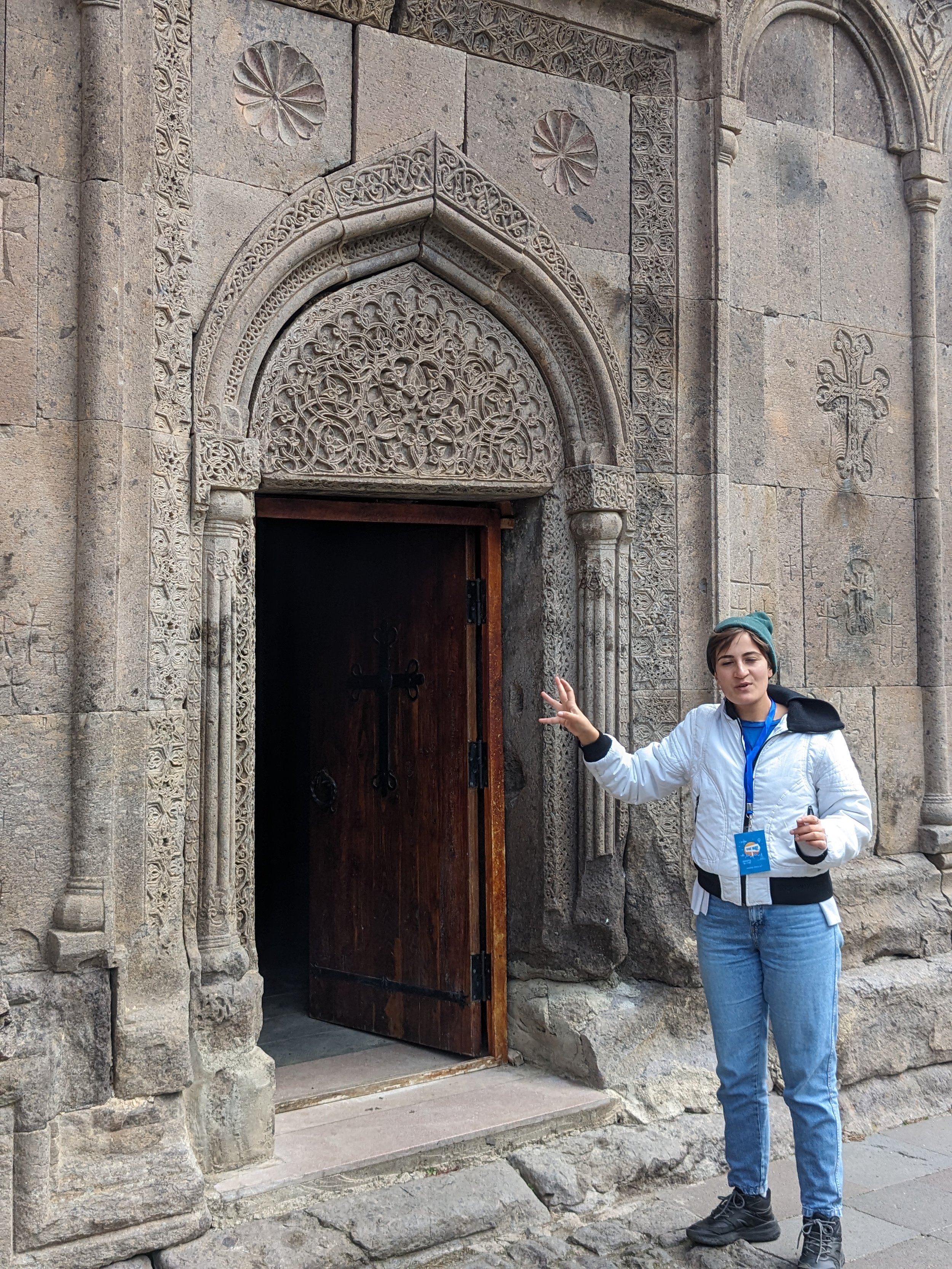
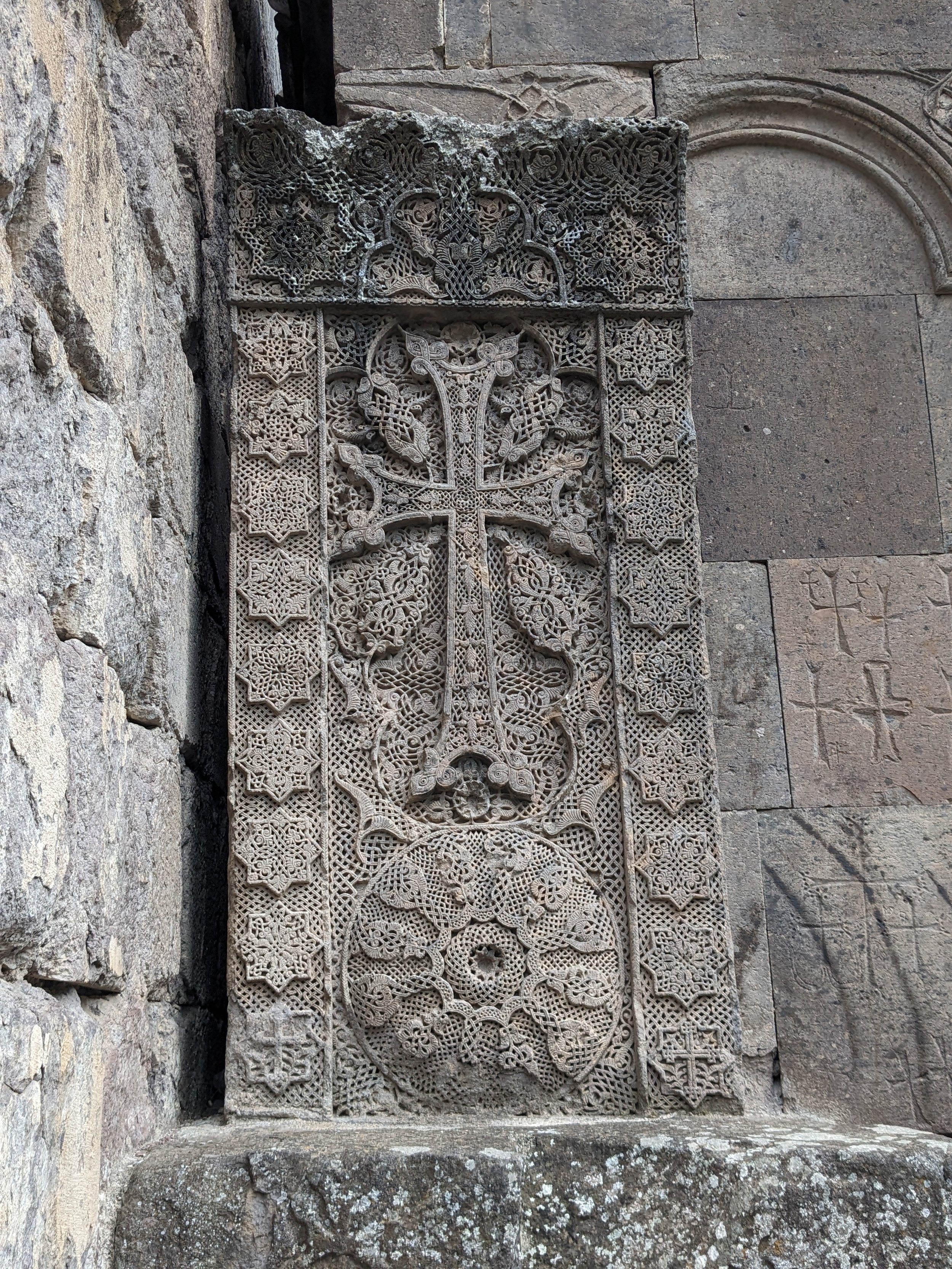
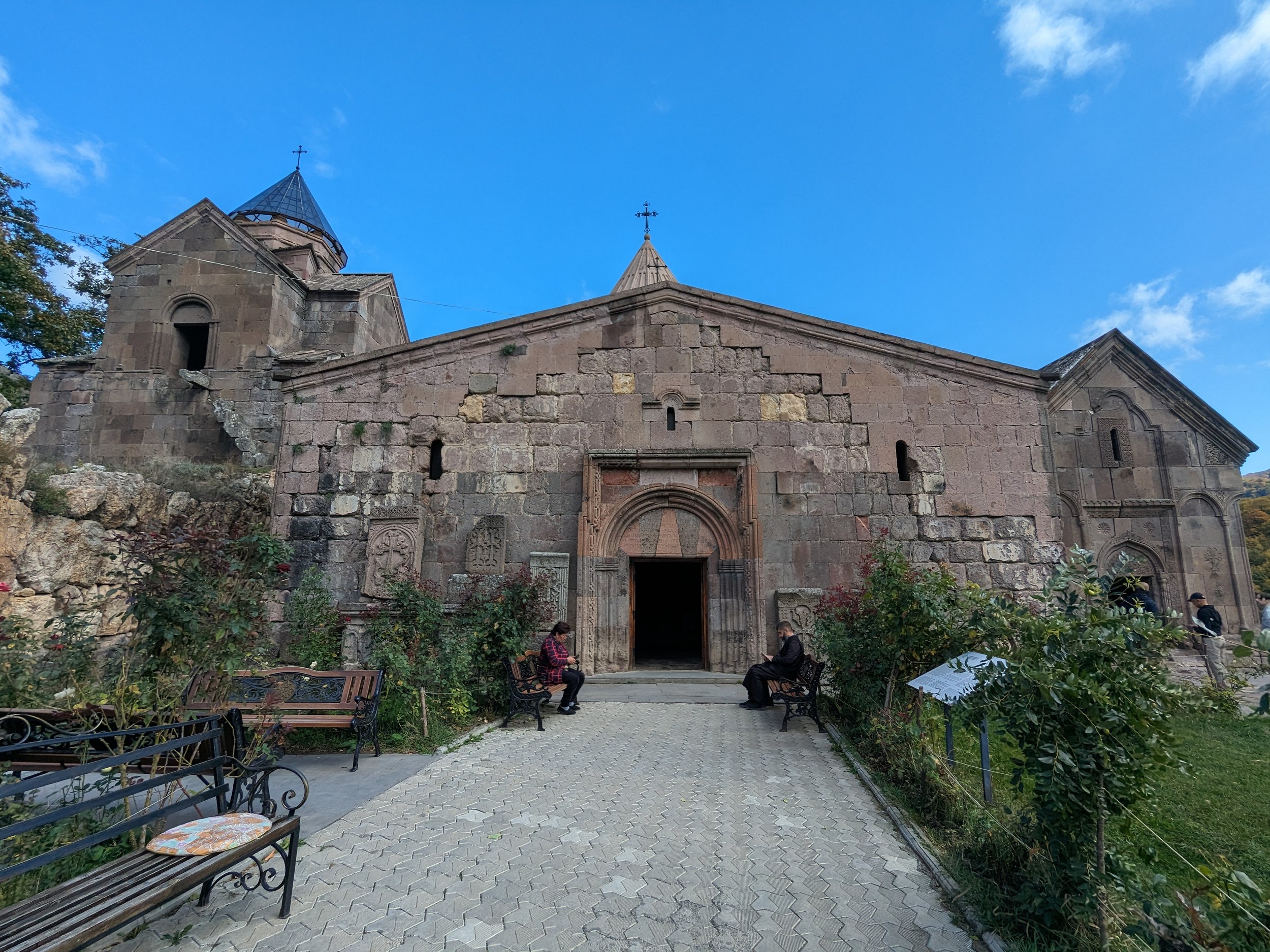
We continued our journey to the Haghartsin monastery. The way this church was situated in the orange and yellow hillside was breathtaking and reminiscent of New England falls. Funny enough, the monastery underwent key renovation thanks to the generosity of a Sheikh from the UAE!
Our excursion culminated in a stop at Dilijan National Park. Hugging our jackets tightly, we followed the trail and stomped through the wet leaves feeling right at home (Pacific Northwest).
Views from Dilijan National Park
Family House, Yerevan
This concludes our trek through the Caucasus.
The call of khinkali will bring us back to this region but for now, we turn our sights to the next adventure.
These Sheep Ain't Gon' Shear Themselves- A 2023 World Cup Dispatch
This post was originally published in Nate’s newsletter on July 29
The Running of the Sheep, Te Kuiti
The Running of the Sheep
I bring you greetings from a rented farmhouse in the sheep shearing capital of the world, Te Kuiti, New Zealand. Te Kuiti used to be the home of the annual Running of the Sheep but the festival was discontinued this year (yeah, I am bummed about it too).
Since we last corresponded, after taking a detour to Hobbiton, Hope and I have traveled the 400-ish miles from Auckland down to the capital, Wellington. Wellington is lovely. It is a city the size of Tacoma but more hilly and cosmopolitan. We arrived on Tuesday, taking in two matches at Sky Stadium and are now winding our way back north for a final pair in Auckland.
Our football odyssey has been exciting. Here’s a rundown:
We watched the host nation, Lady Ferns, upset Norway in front of an ecstatic crowd of Kiwis in Auckland in the tournament opener in Eden Park.
Sky Stadium, called the Pie because of its resemblance to a disposable pie tin, is the site of World Cup matches in Wellington
We next watched an uninspiring but professional USWNT performance against Vietnam, defeating them 3-0 at Eden Park. I fear the US showing in this match was a portend of the unfortunate first half against the Netherlands.
On Tuesday at Sky Park in Wellington, we witnessed possibly the match of the tournament as the Philippines returned the upset favor to New Zealand in a classic 1-0 smash & grab. In the second half, the Philippines played some of the most cynical, time-wasting-y football I’ve seen in my life. But it paid off. They won and the entire country (and assorted Filipino diaspora) celebrated their first ever World Cup victory.
Most recently, again in Sky Park, in a rematch of the 2019 World Cup Final, we saw the US draw against the Netherlands. The US peppered the Dutch goal before going down 0-1 in the first half. They established firmer tactical footing in the second half, with Lindsey Horan scoring the equalizer in the 63rd, but the match ended in a draw. The result left many USWNT fans (myself included) nervous.
We spent last night at the foot of Mount Doom from Lord of the Rings and will arrive back in Auckland tomorrow for the Philippines vs Norway. If the Philippines can pull off another upset, the Cinderellas from Manilla will advance to the knockout rounds.
Our final match will be the US vs Portugal. The US needs to secure a victory if they want to win Group E. But the Dutch face a weaker opponent, Vietnam, in their deciding match and thus have an inside shot at a higher seed for the knockouts round.
Mount Doom (Mount Ngauruhoe) in the Tongariro National Park on Saturday
If the US comes in second, they likely face number two ranked Sweden in the round of 16. If they win the group, they would face the 14th ranked Italians.
Life and Learning in These Kiwi Streets
New Zealand is culturally diverse: the white majority are descendants of British and Dutch settlers. There are also nearly one million Maoris, the descendants of Polynesians who settled on the islands in the 14th century. As we’ve found in previous travels in ex-British Colonial territories like Singapore and Malaysia, there are high numbers of South Asians and ethnic Chinese people who have been here since the 1800s. Like in the Gulf, people from South East Asia, especially the Philippines and Vietnam have settled here in recent decades. But beloved, I have never been in a place so bereft of Black people. I saw more Black people when we traveled through China. Hell, there are more Black Republican members of Congress than there are in these Kiwi streets. This has resulted in some odd looks, particularly in the more rural parts of the country, but everyone has kept it one hundred thus far. Although, not even my family says “yah, brotha” to me as much as dudes of all stripes here.
One element of this trip that I am dying to talk about at length either on the podcast or in a subsequent newsletter is the history and current status of Maori people in New Zealand Society. In many ways, they are among the most successful people groups in the world at weathering colonization but in others there are clear barriers to be overcome. We visited a Maori village and had a traditional meal (Hāngī) while visiting Rotorua. I felt like an idiot for not knowing most of the info we were taught that evening and I walked out of the village with a ton of questions but those will have to wait for another time.
You Owe It To Yourself to Watch Women's Soccer & The World Cup
This post was originally published in Nate’s newsletter on July 21
Jet lag is real.
At some point yesterday, I looked at Hope and realized I had no idea what day (or day of the week) it was. Our road to Auckland was silly (Seattle to Dubai to Singapore to Sydney to Auckland) but was necessitated by life circumstances and the packing/clothing requirements of going from northern hemisphere summer to southern hemisphere winter. Tonight when we go to sleep will be the first time we’ve spent back-to-back nights in a bed since June 15. I am far too old for all these red eye flights.
But we made it—I’m stoked for our third World Cup.
Our seats in BC Place in Vancouver for the group stages in 2015
Last night, we were in Eden Park for the tournament's opening match. The hosts, the twenty-sixth ranked, New Zealand knocked off twelfth ranked Norway, 1-nil. Tomorrow we’ll return to Eden Park for the opening match for the US versus Vietnam (if you have access to a sportsbook, I suggest you bet the over, +/-6.5 goals).
As often is the case in my life, plans came together one night at a pub. While talking with some friends, we decided we should head up to Vancouver when Canada hosted the World Cup in 2015. We caught a few matches and really enjoyed the atmosphere. We decided on the drive back to Tacoma to make this our thing.
In 2019, the tournament was in France. We followed the US through the knockout rounds. The atmosphere at PSG’s Parc des Princes in the quarterfinal was electric, as tense as any football match I’ve ever attended. I have never heard anything as loud as the French crowd’s eruption when Wendie Renard scored in the 81st minute. The match result was in doubt deep into the match. We went to watch the US defeat England in the semi and the Netherlands in Lyon in the final.
Hope and I in Lyon before the 2019 final
In some ways, high-level women’s soccer is the best sporting experience in the world.
Players are accessible. I can’t imagine ever sitting down with Messi for an hour long chit-chat. But I interviewed arguably the best WOSO player in the world, Megan Rapinoe for an episode of Nerd Farmer. Several players from OL Reign (Seattle’s team in the NWSL, the professional WOSO league in the US) lived at Point Ruston before the team relocated to Seattle; a few players still live there.
The matches are affordable. Our tickets to last night’s opener were 30 Australian Dollars or about 20 USD ($20.29, if you’re nosey)—you can’t get in to see the Mariners lose for that much.
The US women are dominant. If you like winning, the United States is the Argentina + Brazil + Germany of WOSO. They enter the tournament seeking their third consecutive World Cup title. Meanwhile, the American men haven’t gotten out of the round of sixteen since 2002.
The game is at a really special point. It’s like the old baseball Negro Leagues or the ABA in the 1970s—arguably a better product—with less hype or recognition.
This can’t last.
In the book The Ball is Round: A Global History of Soccer by David Goldblat, he argues sports go through a transition from amateurism to professionalization to commercialization. WOSO in the US is professionalized. Players get paid (not enough, obviously). They play in professional facilities (I hated when OL Reign left Tacoma but they deserve to play on the same pitch as the region’s men’s team). They have a national TV deal with CBS/Paramount and are increasingly drawing larger audiences. There’s work to be done but with these structures in place, players have the chance to showcase their talent on grand stages.
But commercialization is coming.
The players deserve it but it will degrade the accessibility and affordability fans currently enjoy. Picture Alexi Lalas (bleck) bellowing “we’re coming to you live from the Subway Fresh Take Studios, here alongside the Raytheon Pitch at Facebook Stadium.” All the gross capitalistic trappings that have consumed European football and the big three US sports leagues are coming, but the barbarians aren’t quite there yet.
The US women kickoff tomorrow against Vietnam at 1pm from Eden Park here in Auckland. I’ll be there and you should be watching.
Mahna Mahna...Manama
The Kingdom of Bahrain is an unassuming island nation just across the water from Saudi Arabia.
Originally supposed to be one of the then nine United Arab Emirates, Bahrain (along with Qatar) dipped out three days before the signing of the documents and decided to declare themselves independent!
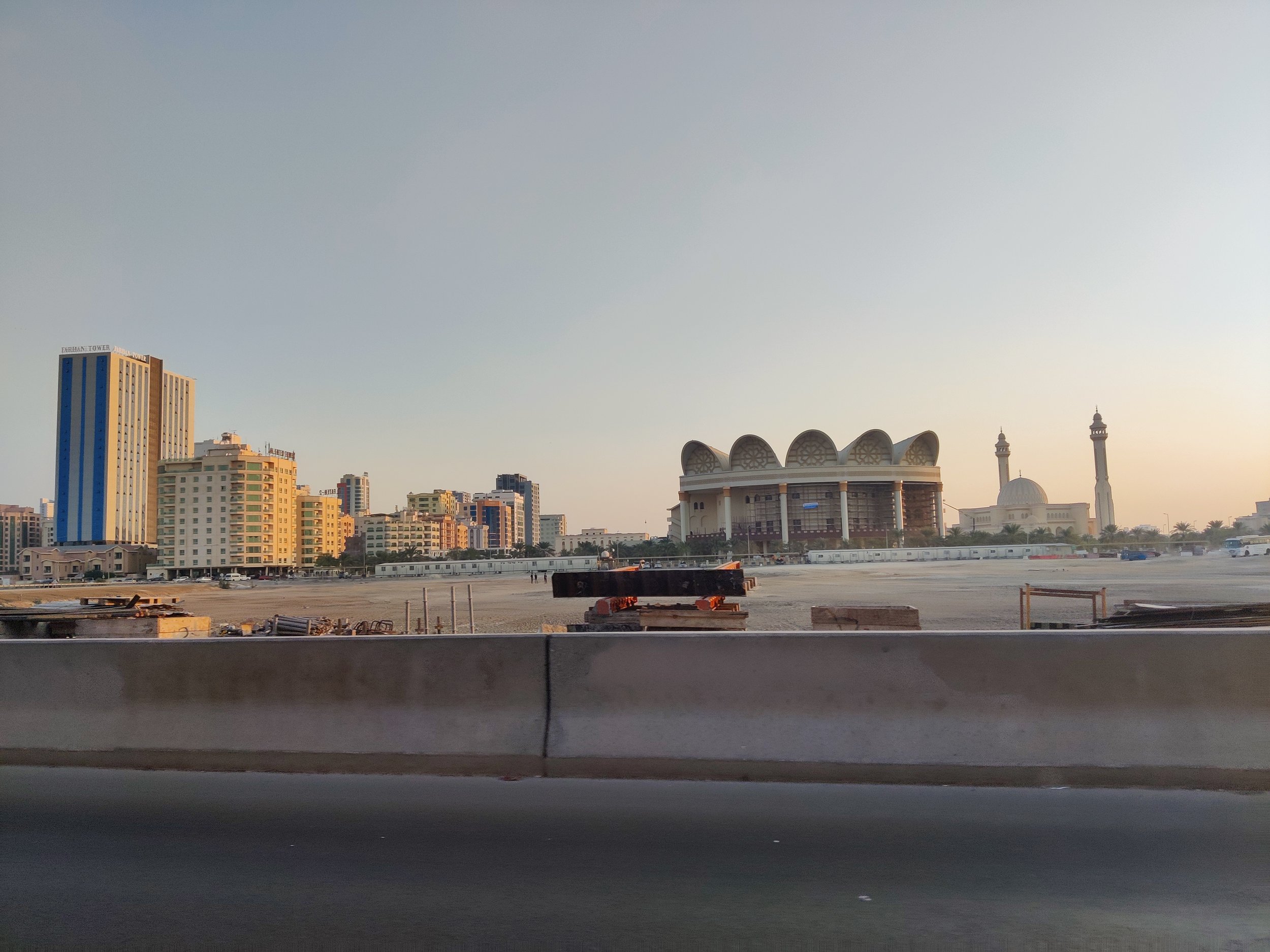


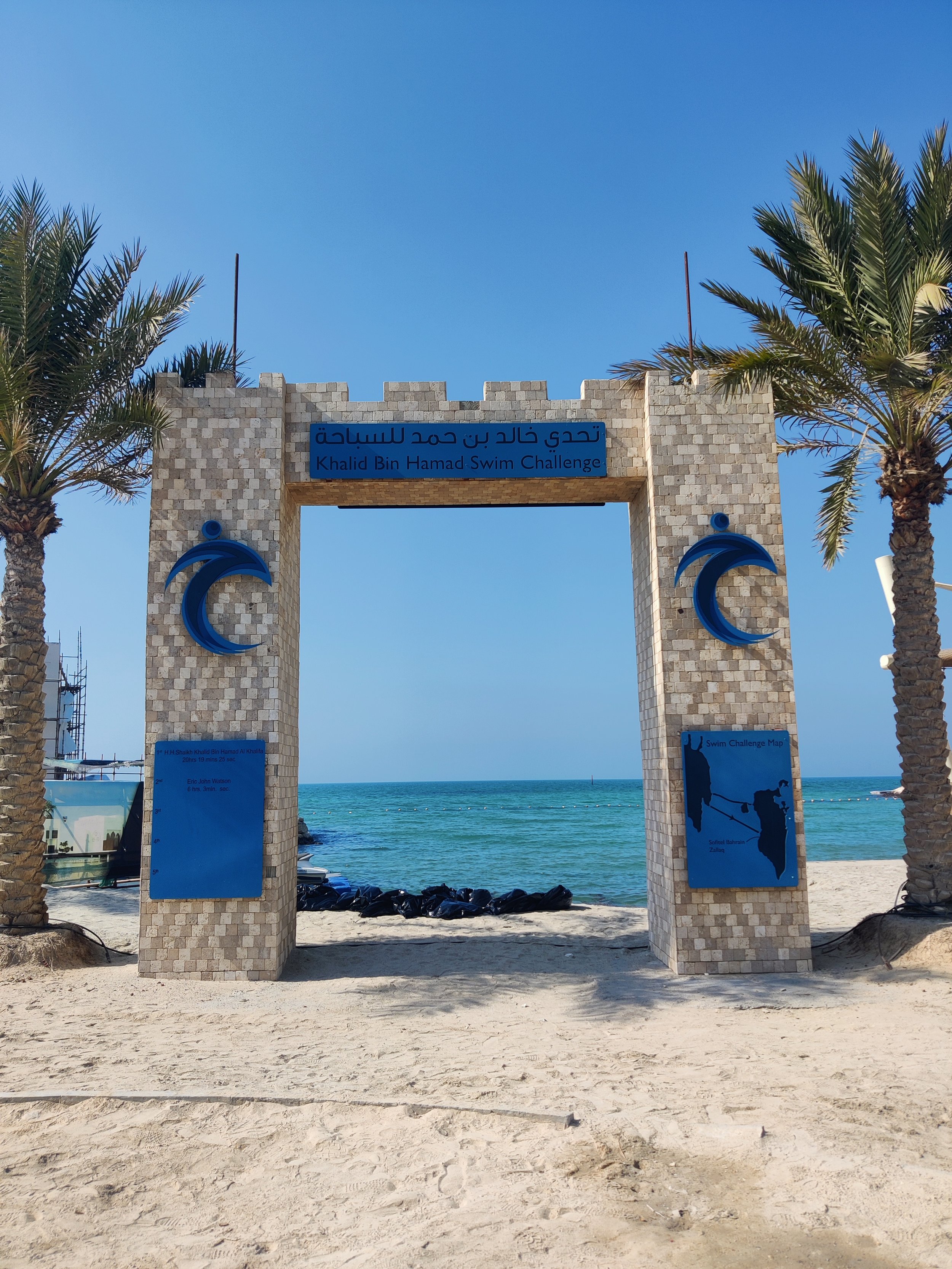
Bahrain is the third smallest country in Asia. It is roughly 4x the size of Washington DC, with the population equivalent to New Hampshire. Someone compared it to Saudi Arabia's Tijuana but that does it a grave injustice. The two states are connected by a 25km long bridge and Bahrain is visible from Saudi Arabia on a clear day. It certainly feels more rustic than where we live in UAE's capital but we mean that in a good way. Manama, its capital, has history and character.
As ever in the region, the tall minarets rising from mosques shape the built-landscape. They're punctuated by the few high rises that dot the horizon, giving a Dubai/Abu Dhabi vibe but toned down, the architecture showing a hint of tradition. Bahrainis are seafarers and there are nods to that history throughout the city: the port, sculpture, statues, and of course the endless things named “pearl” (lulua in Arabic).
Bahrain is an interesting place, this 21 Facts About Bahrain article taught us several things about the country before we arrived. Our first stop after check in was Nassef, a traditional Bahraini style restaurant in the heart of the Old Souk. Similar to the rest of the culinary delights in the region (hummus, fattoush salad), Bahraini dishes have a stronger Iranian and Iraqi influence manifested in prominent sweet and sour flavors.
We popped over for a weekend getaway with friends that included the Bahrain Jazz festival and a rather eventful brunch with live Latin music, a clown, a fight, and Mickey Mouse. The flight from AUH is under and hour and tickets to Manama float around 100 USD. We enjoyed our time, feel like we got a good sense of the city-state, and have some other sites we want to see next-go-round.
As Arnold said so eloquently, "I'll be back".
From Tbilisi with Love
When we travel we like to go beyond the usual suspects. Sure, Paris and Hong Kong are great but you haven’t lived until you’ve stayed in a Nicaraguan hostel where the owner tells you stories about being a contra en la guerra while driving you to the beach. We like places that feel genuine, not overrun by tourists, and I’m not gonna lie–we like a bargain. For these reasons, two of our favorite regions to visit, places we’ve returned to repeatedly, have been Central America and South East Asia: good food, good people, and the feeling you’re well off the beaten path. The Caucasus and Georgia are that.
Geography: We spent fall break in the Georgian capital of Tbilisi. For me, it’s been a while since I felt cold. It felt nice to get out of the Gulf and feel a more familiar fall. I spent much of the trip wearing a sweater and of course a 2016 MLS Champion Sounders hoodie. This was also our first time visiting a former Soviet Republic. Georgia is situated smack in the middle of the Caucasus. It has the Black Sea to its West, Turkey to its southwest, Russia (its occasionally problematic neighbor) to its north, and shares borders with Armenia and Azerbaijan to the southwest. Tbilisi is a cultural crossroads, bisected by the Mtkvari River with heavy Russian and Ottoman influences. Georgia is also home to the oldest winemaking region on the planet, going back over 8,000 years. That’s older than France’s and they are very proud of it.
The Trip: Low-key, I am not sure when I really found out that Georgia was a thing. I think it was during their war with Russia in 2008. But I have been reading a ton about it over the last few years. Our head-of-school has a property there and raves about it. It’s one of those places that it makes less sense to visit from back home in Tacoma but from here it’s just a 3 hour flight over Iran and Azerbaijan. We flew FlyDubai, Emirates’ second label equivalent of Old Navy.
Tbilisi is a beautiful city and it passes the $2/$5/$70 test. This is a test that I apply to cities. Can I get an espresso in the heart of the city for $2? Can I get a good meal on the street for less than $5? Can I get a nice hotel room, (hopefully with breakfast included) for $70? If so, game on–Georgia passes the test with flying colors. The food in Tbilisi was delicious, the wine was cheap and plentiful, and their national beverage cha cha (more on this later) flowed freely everywhere. We stayed in the heart of the old city, near Freedom Square and found the city very walkable and easy to navigate.
Dos:
First off, you should go! If you have ever been like I wanna go to Prague or Vienna, give Tbilisi a shot instead.
Drink Georgian wine–it’s literally all delicious and they’re (rightfully) proud of it.
Visit a traditional sulfur bathhouse for a scrub and a beatdown from a middle aged Georgian man with hands like bricks.
Eat the local cuisine. I recommend their dumplings called khinkali. They, like Russian pierogies, arrived from China via the Silk Road and are delicious.
Embibe in the national beverage, cha cha. It is like Italian grappa, made from the skins, seeds, and stems of the winemaking process.
Tour an Orthhodox Church. It’s fascinating to me how they feel like the midpoint between a masjid and catholic church.
Read up on Georgian history–Stalin is Georgian–they have a museum about him, we didn’t make it there but we’re going next time.
Georgia is a country of four million people at the crossroads of history with their own language, alphabet and a culture, though influenced by their neighborhood, also distinct from it. It was dope and I want to go back.
Now, here come the photos.
